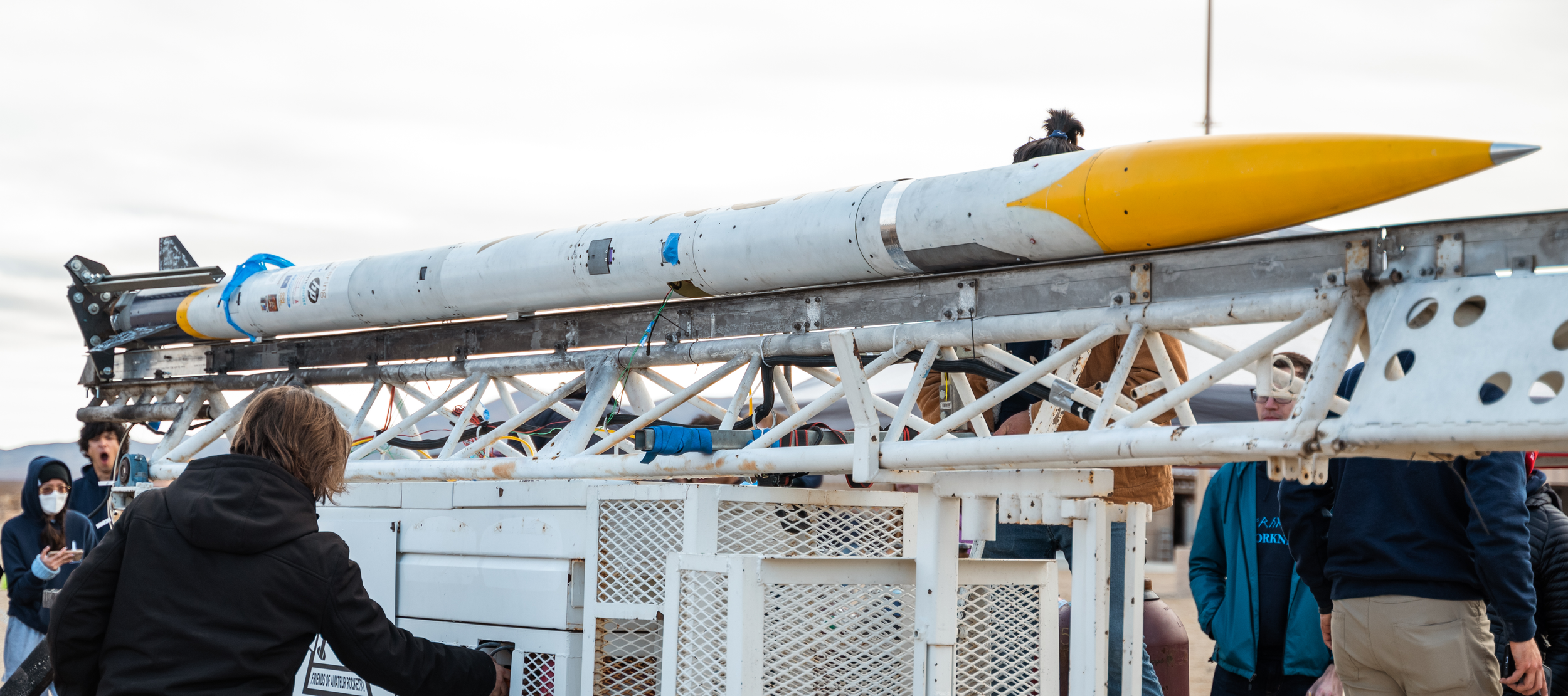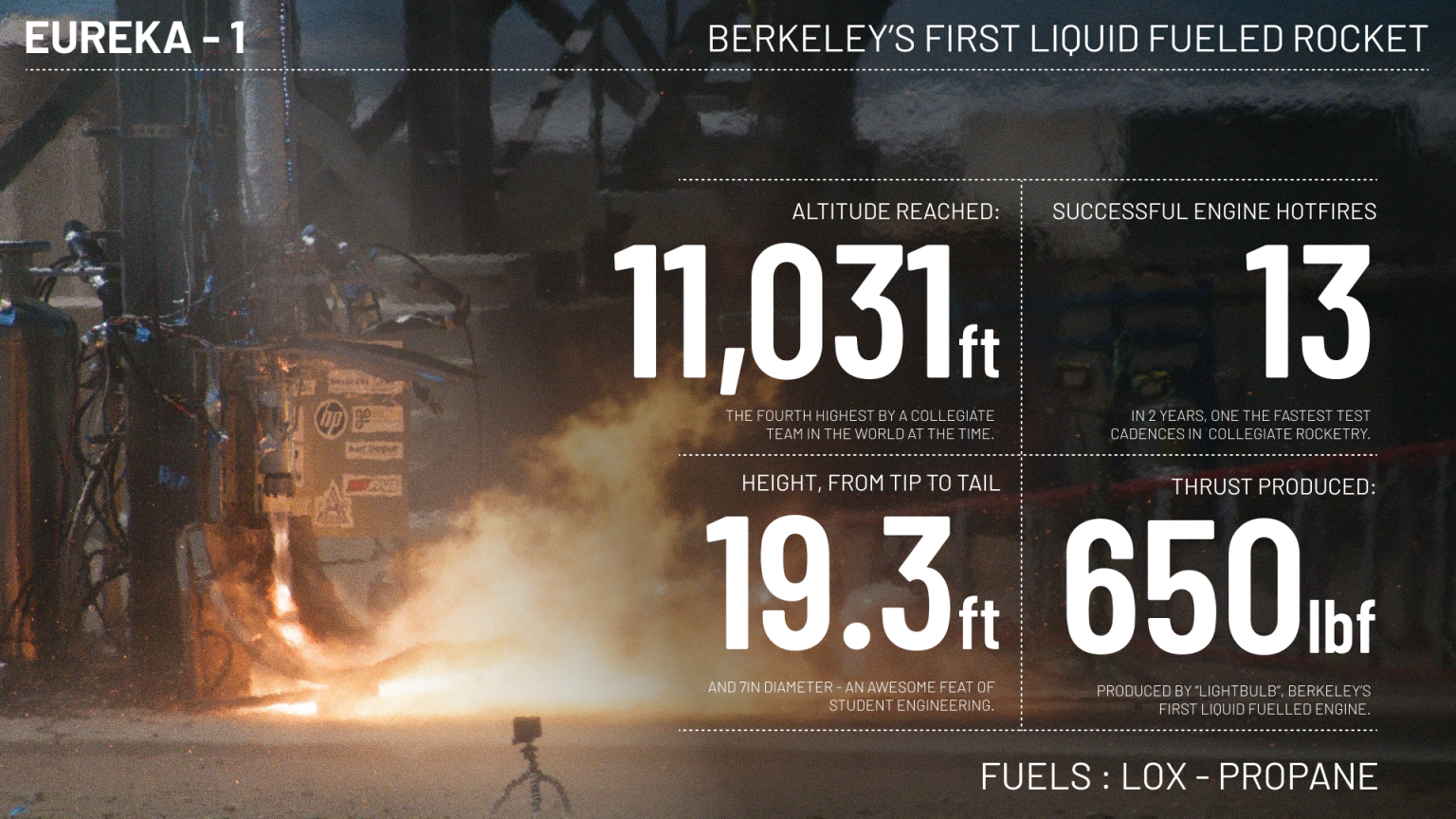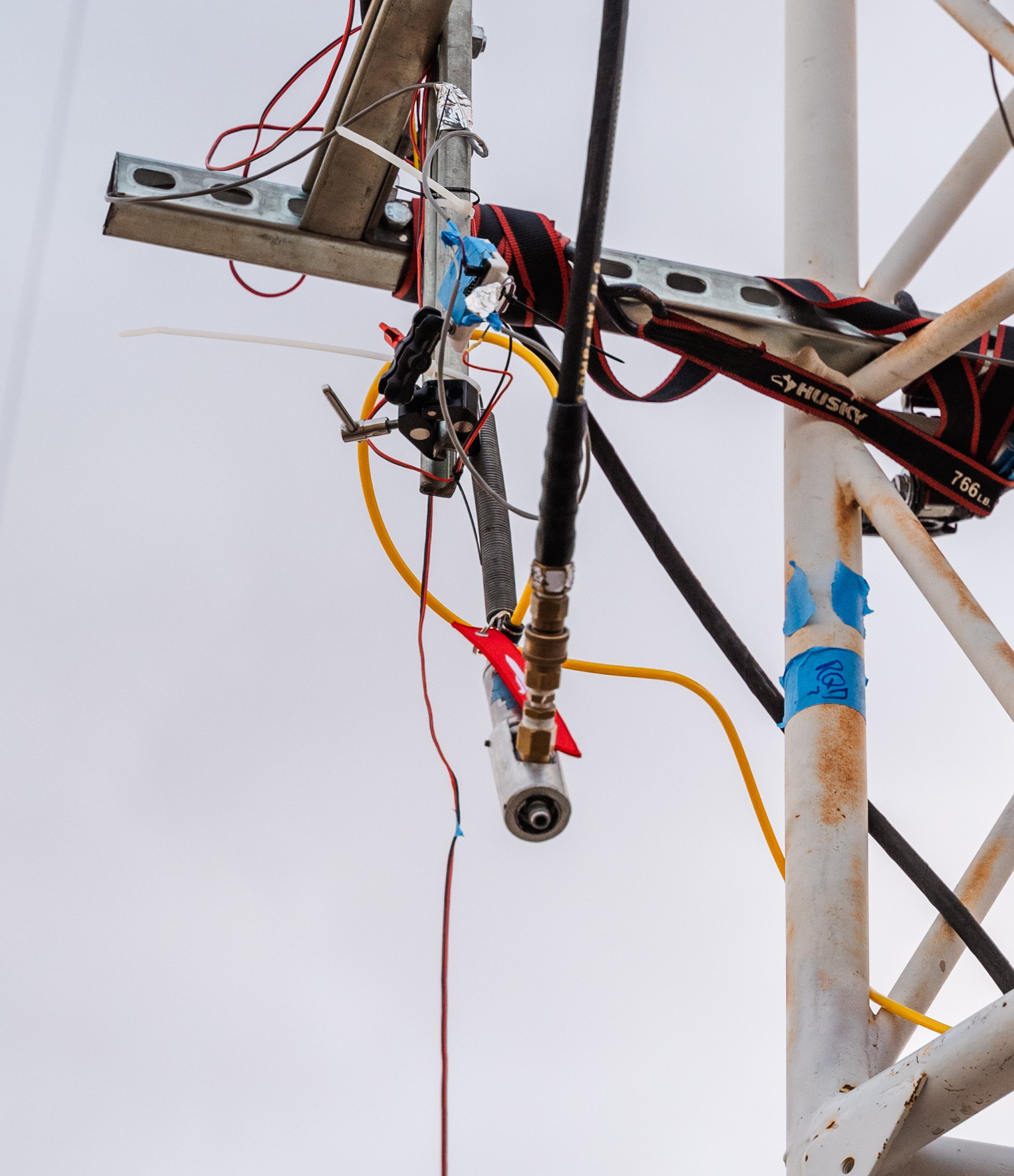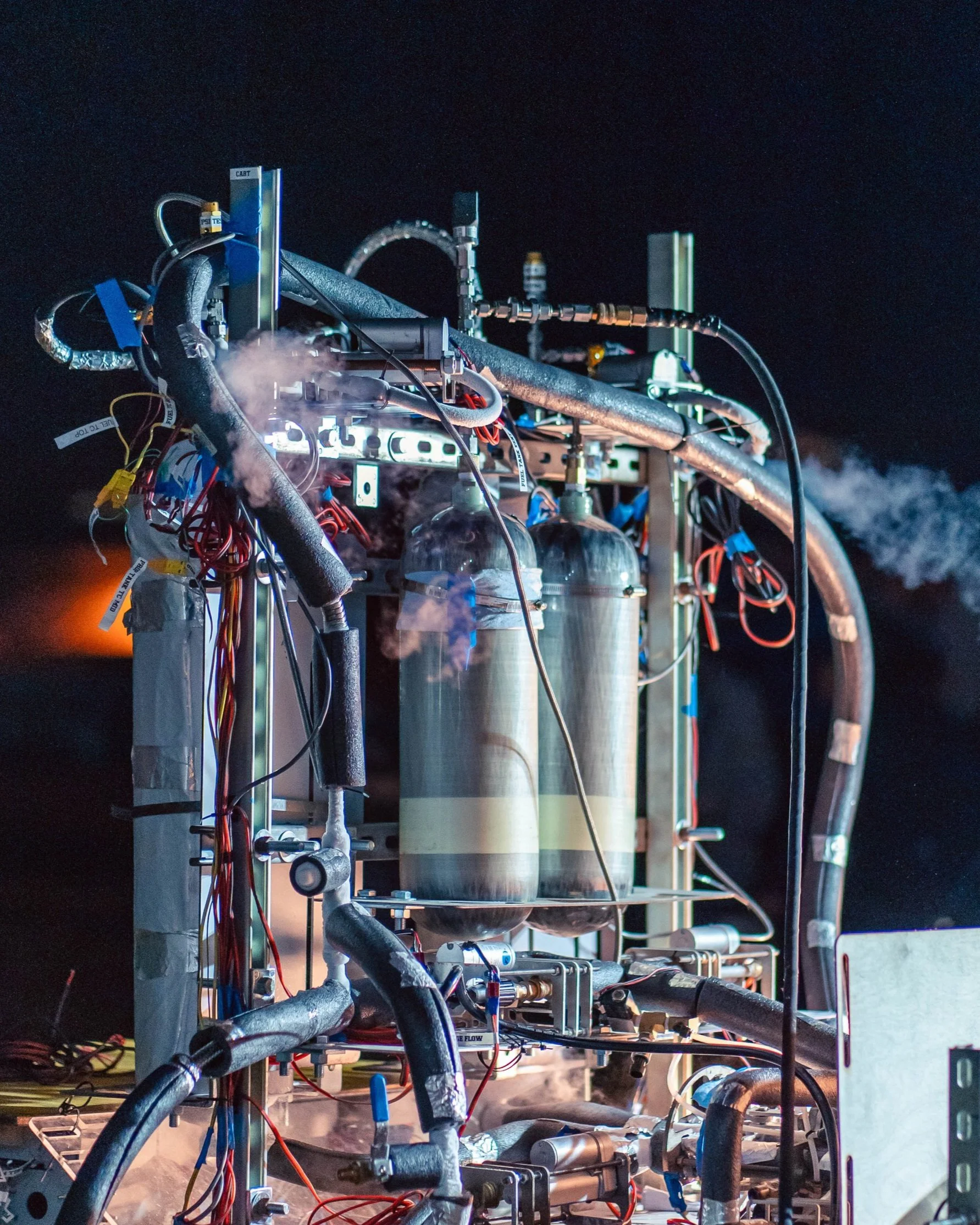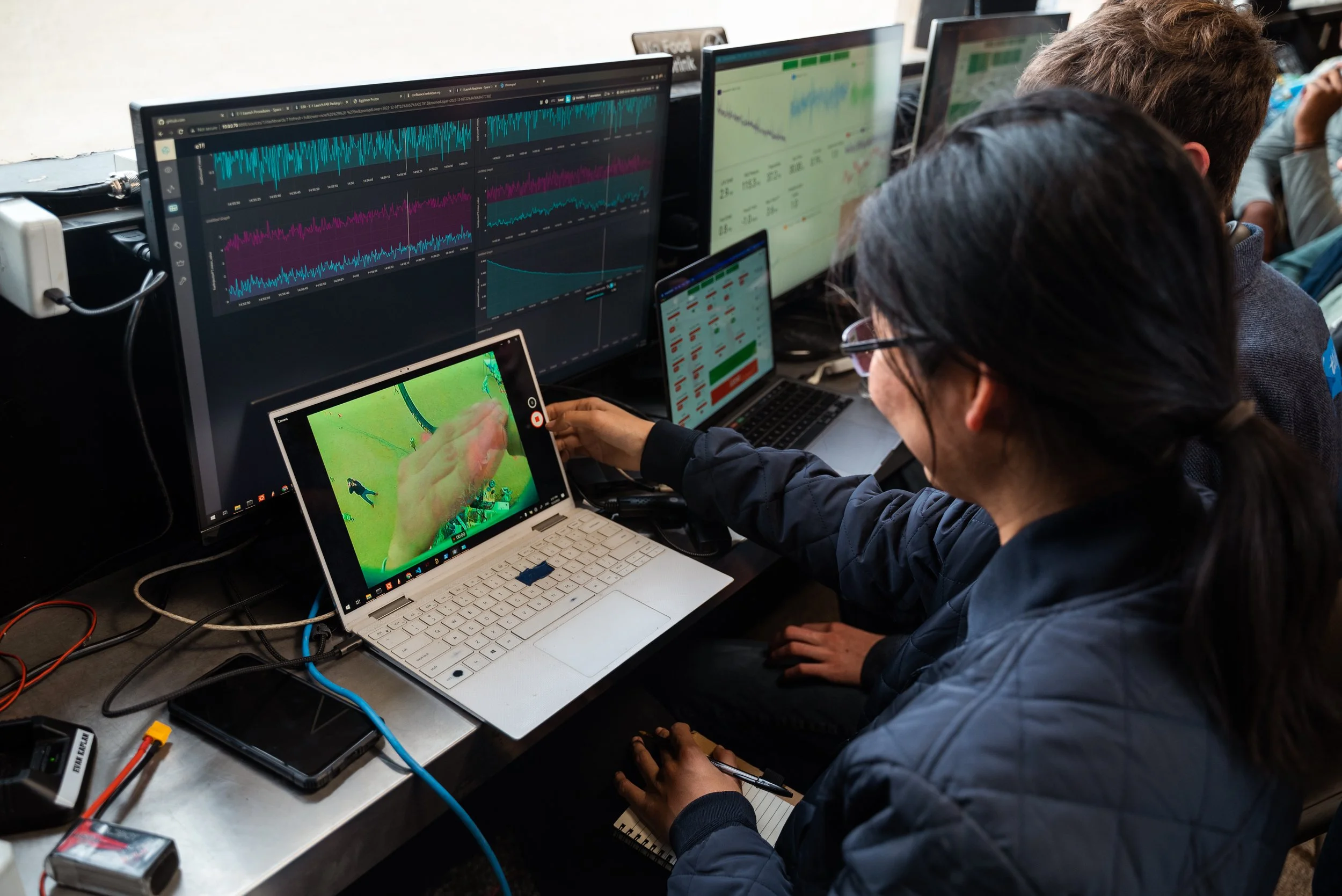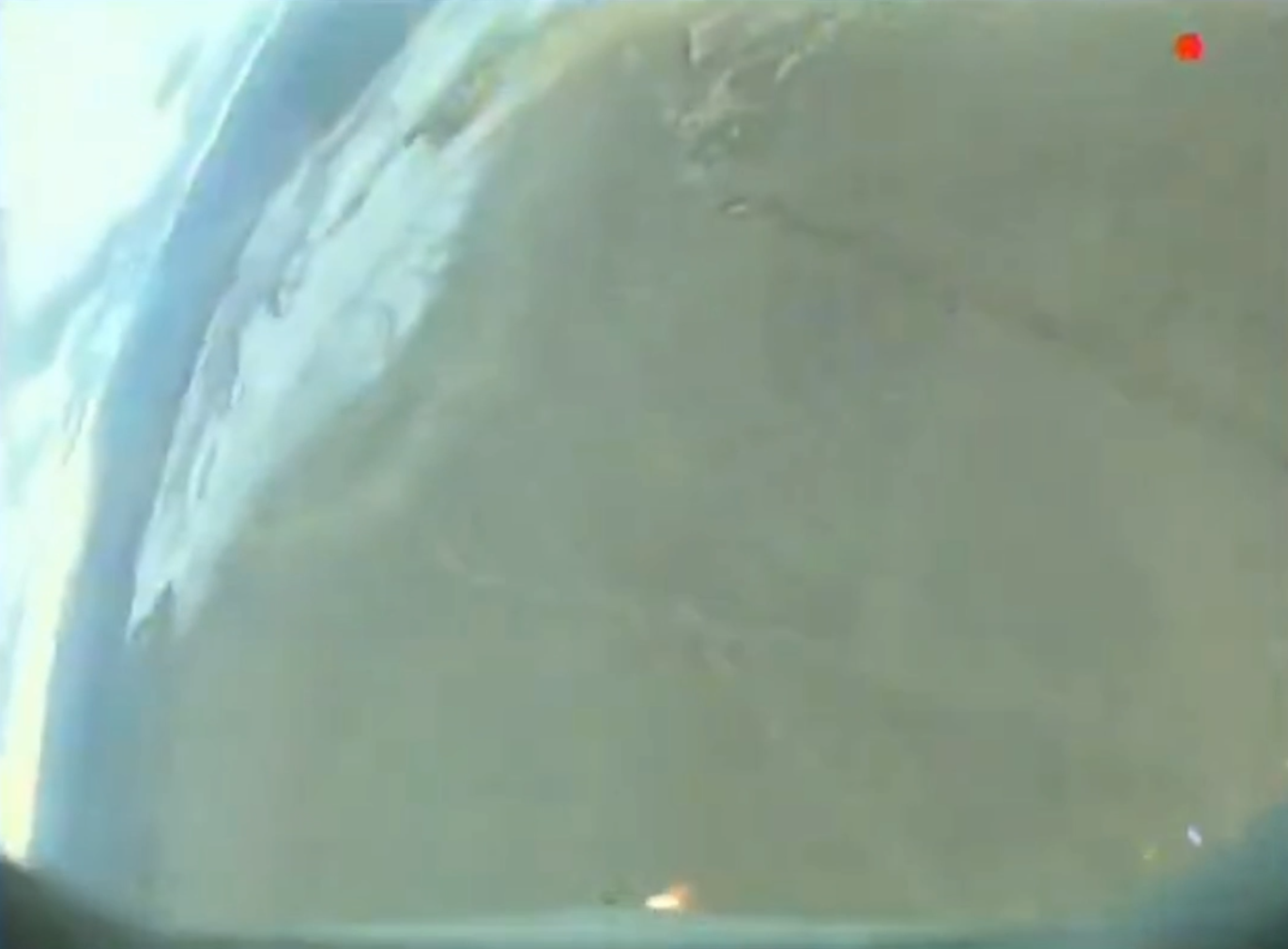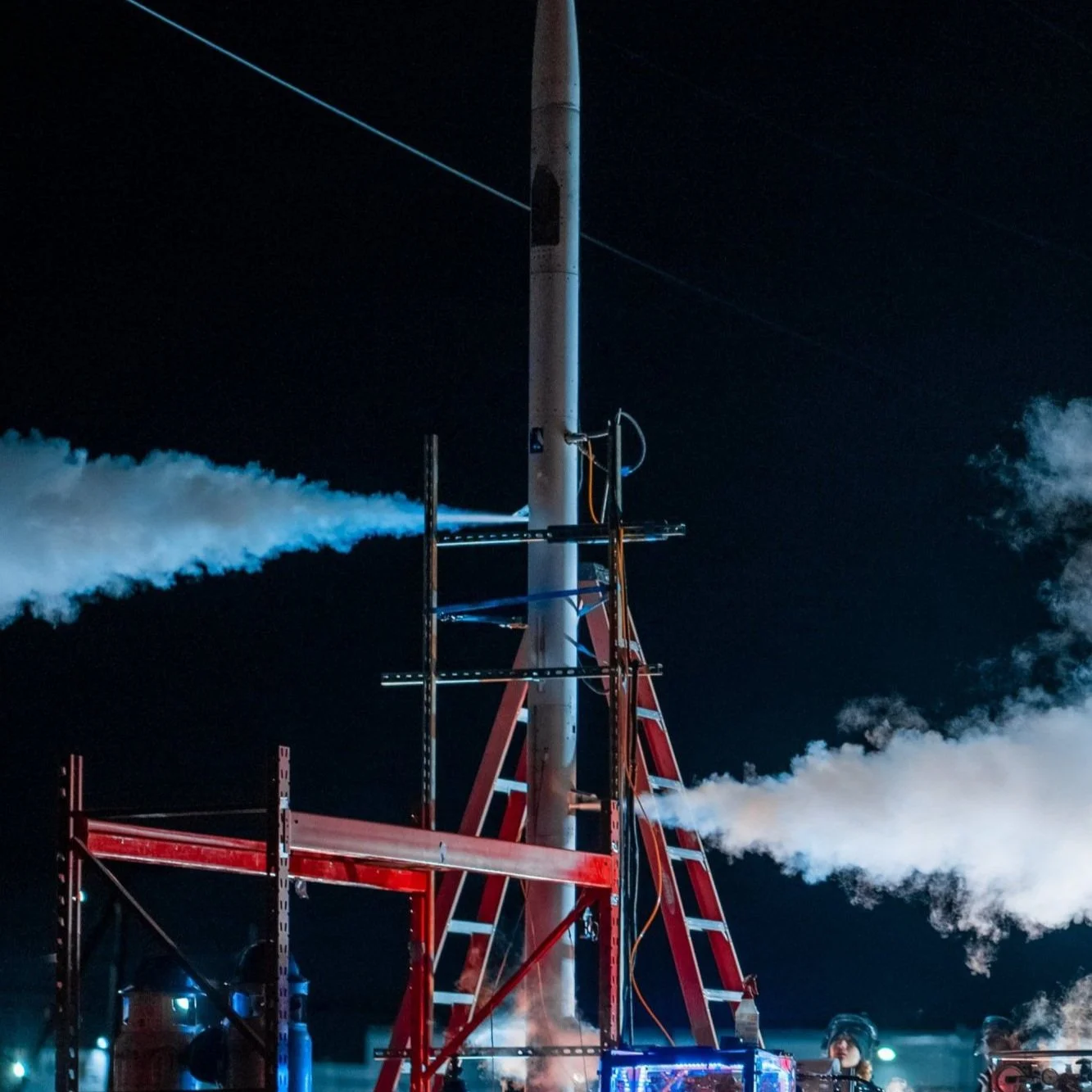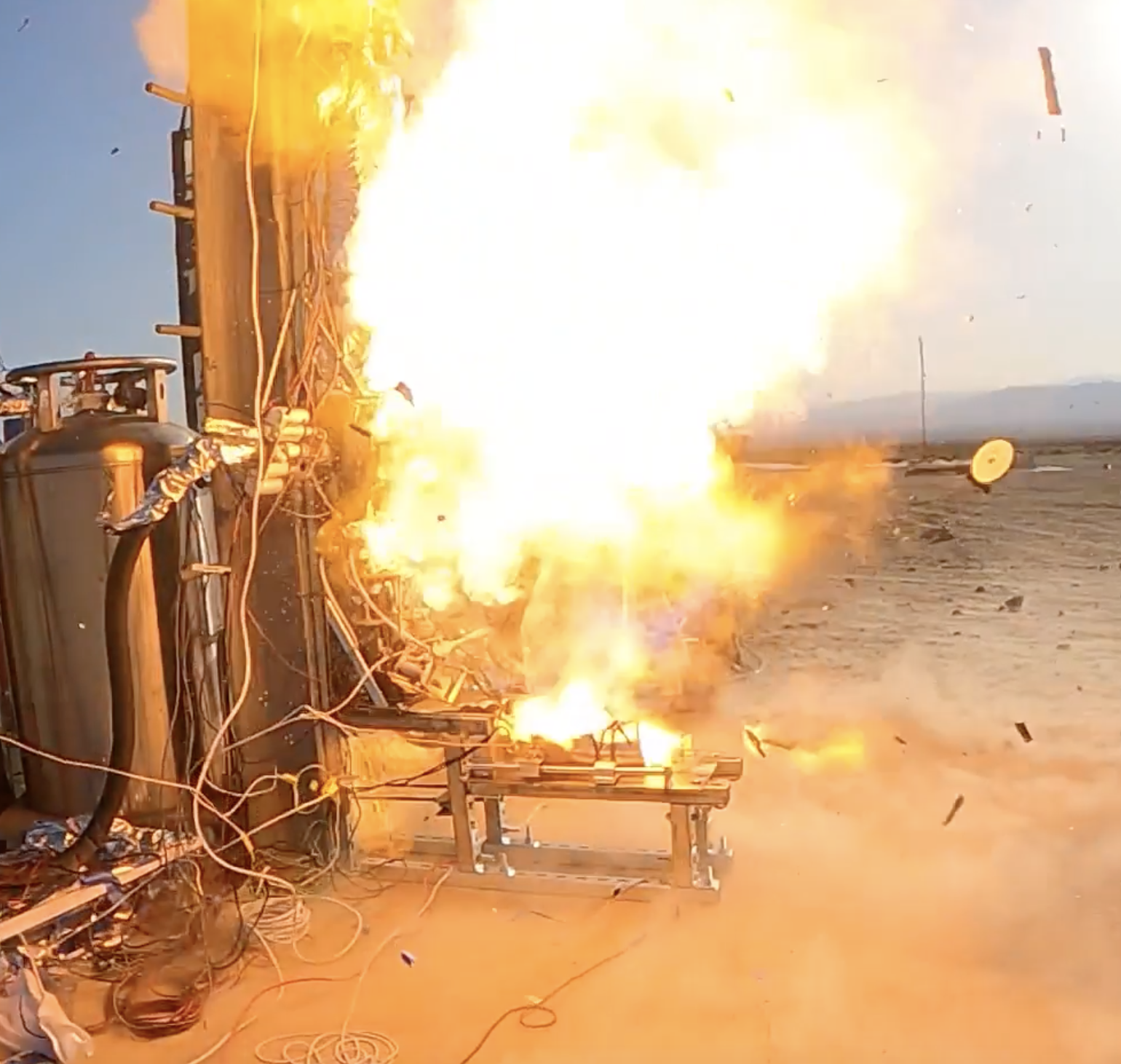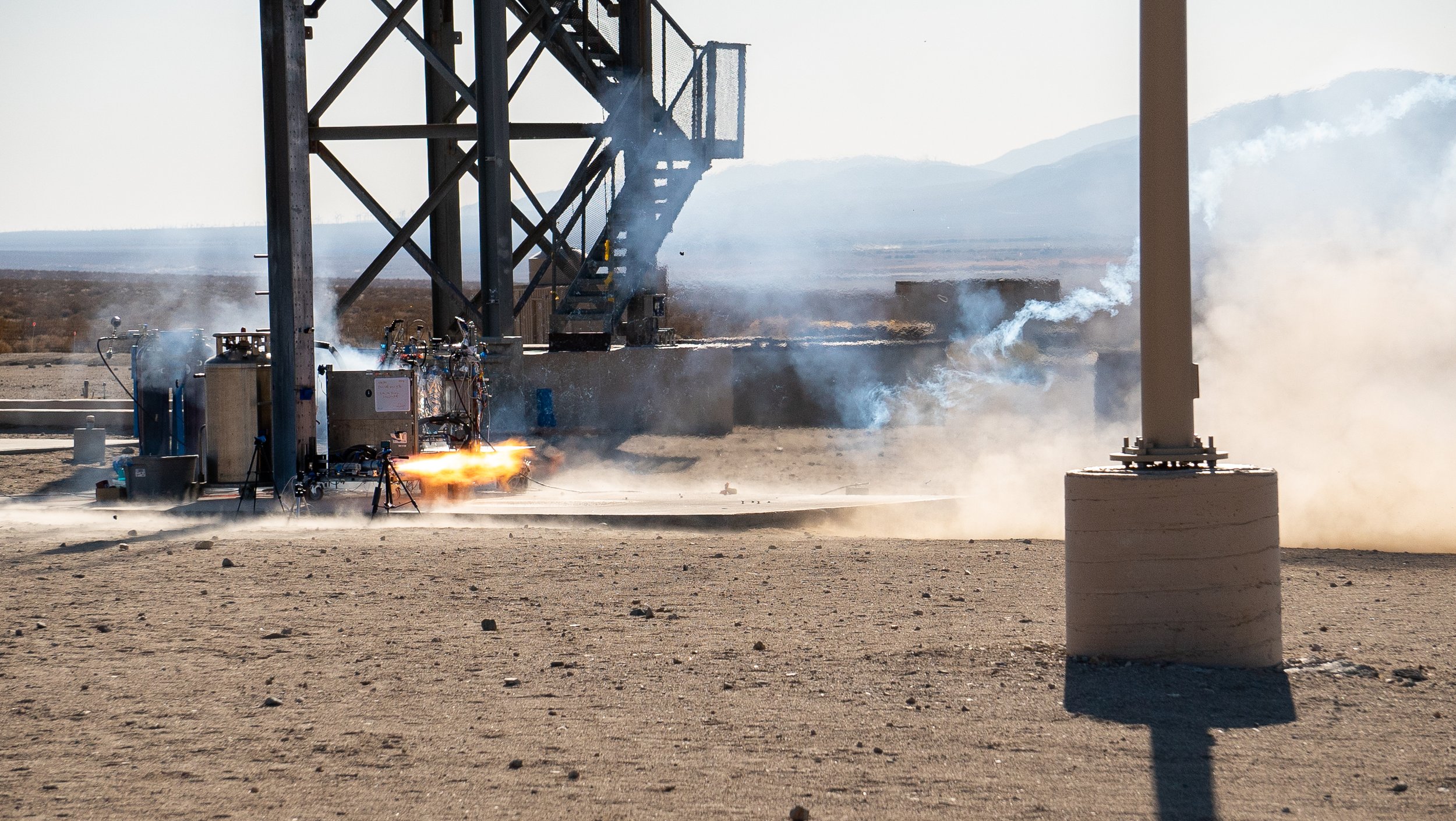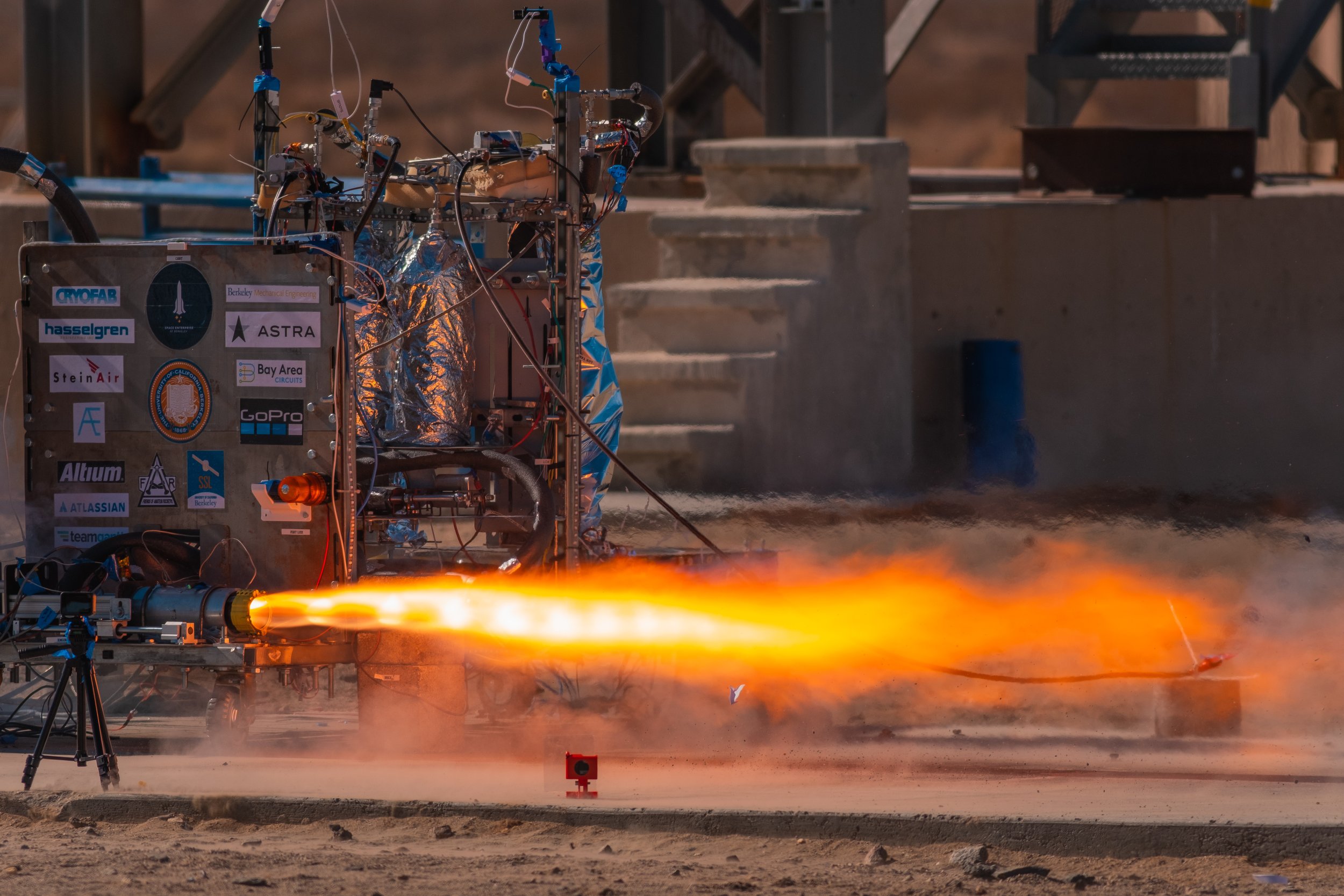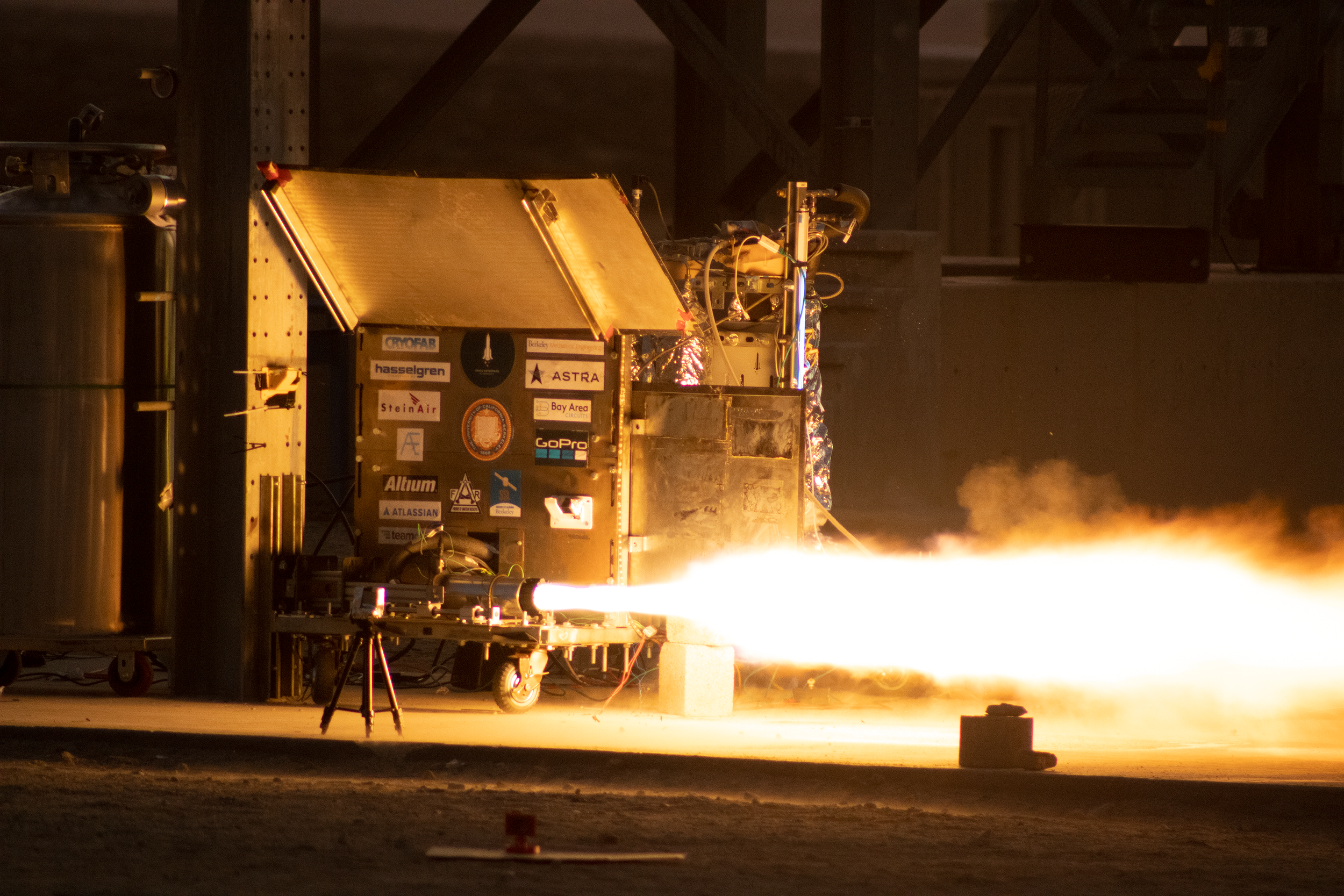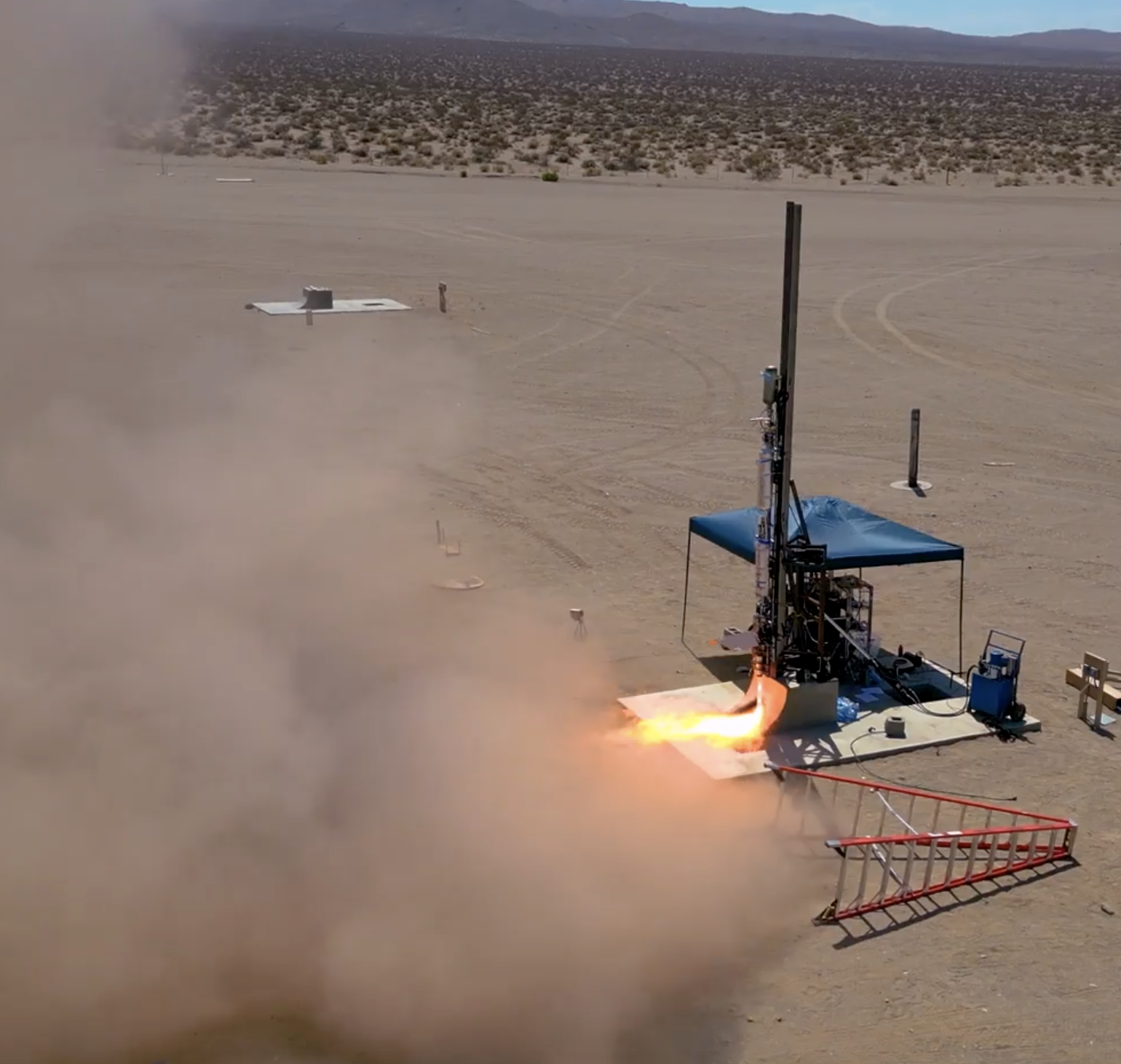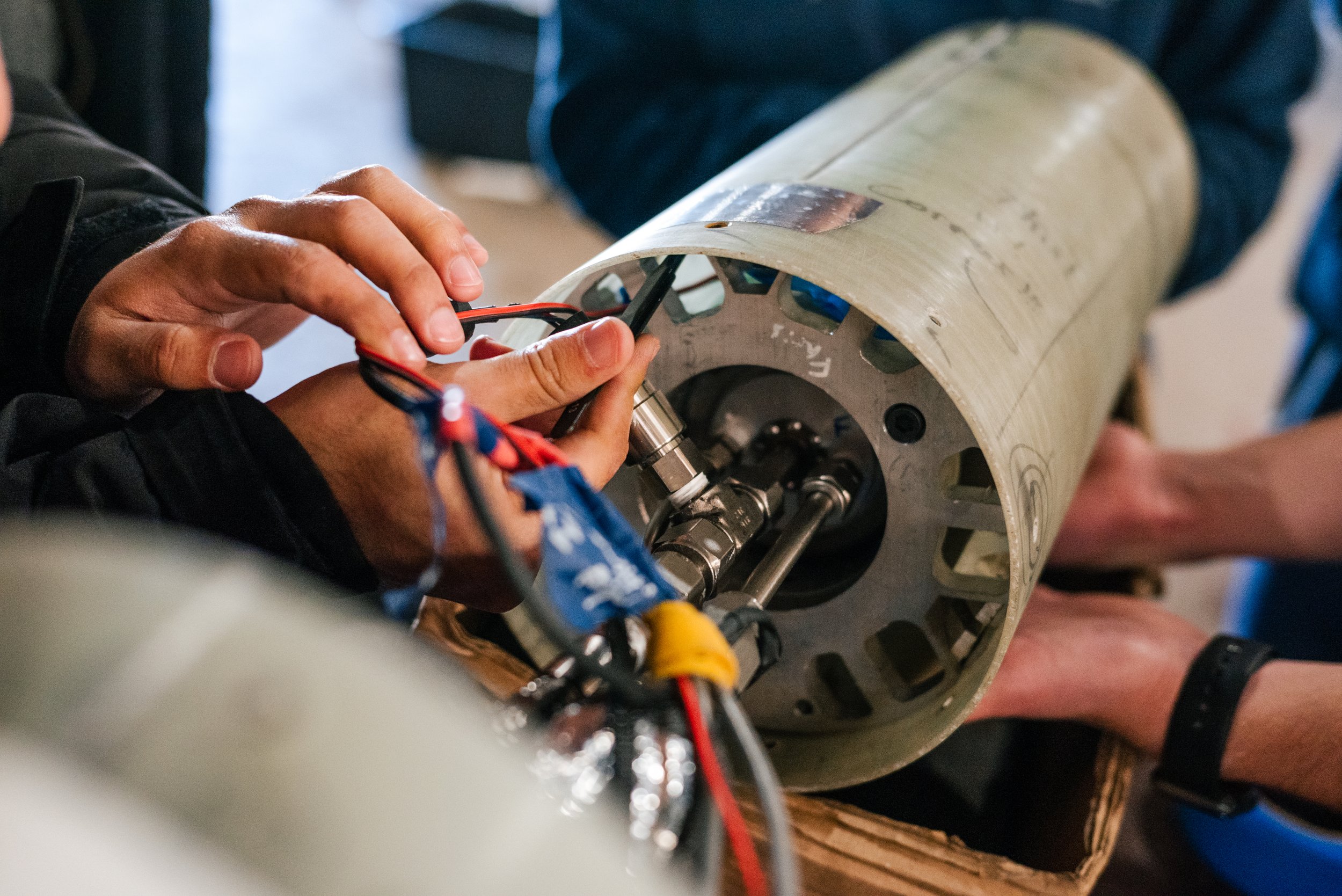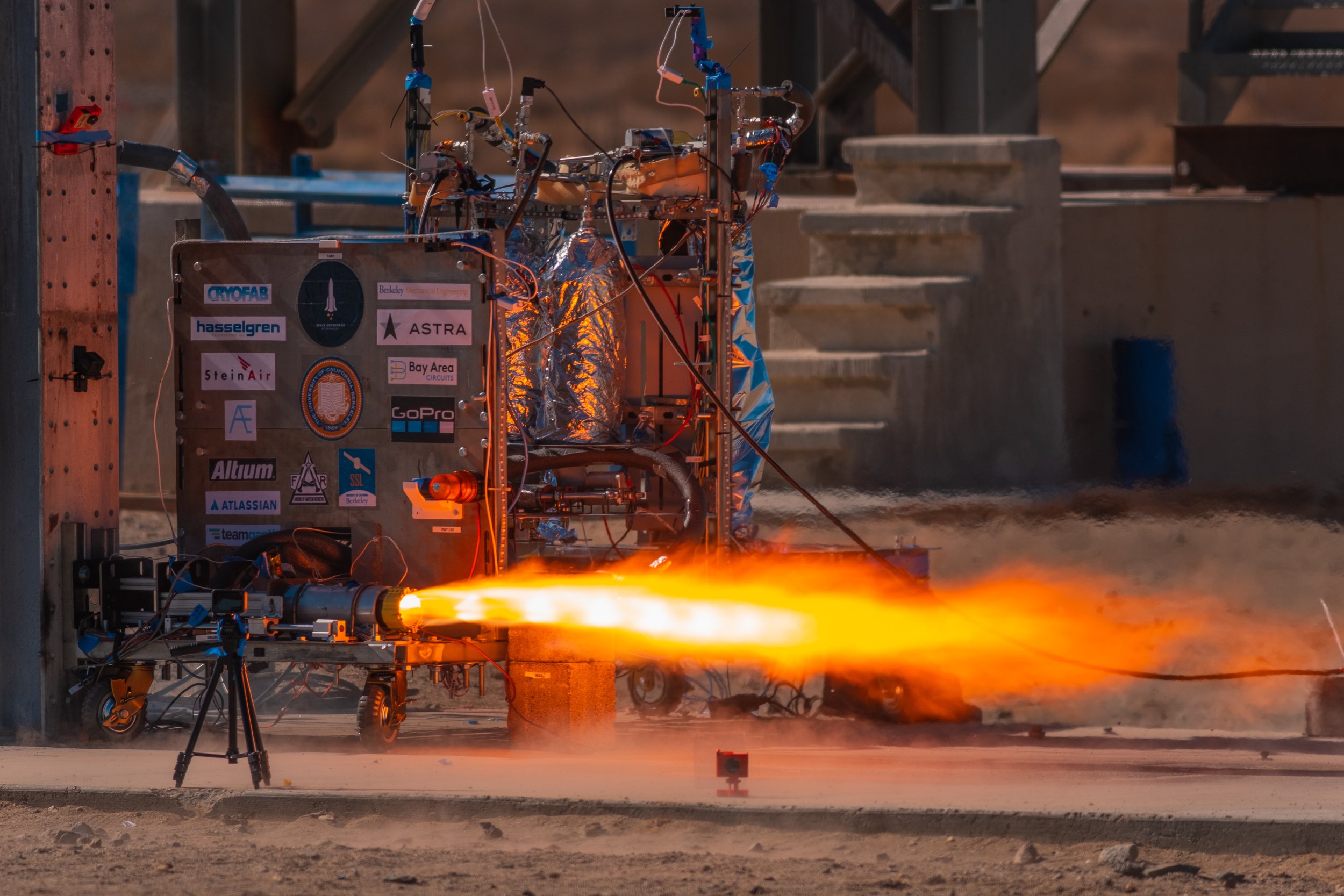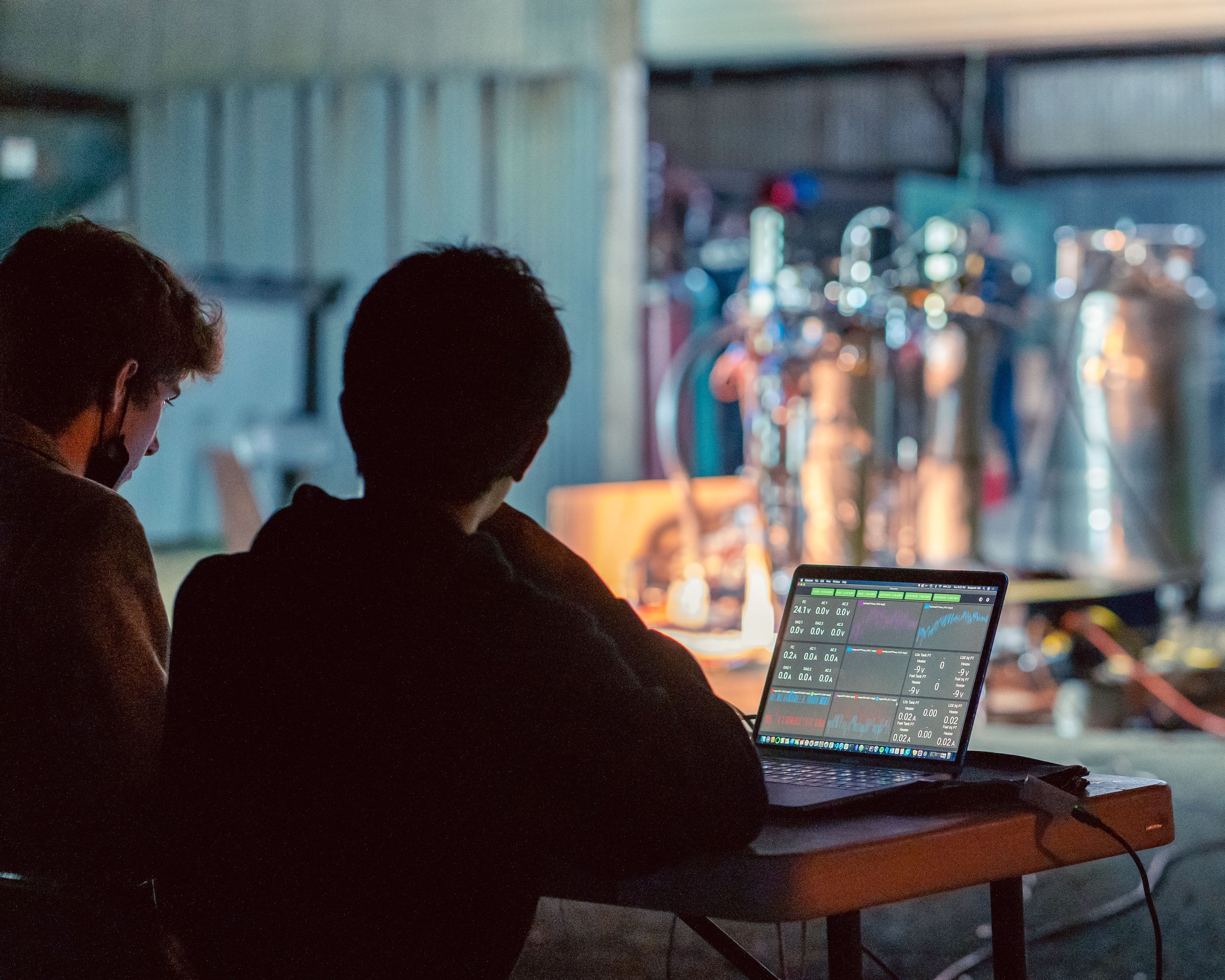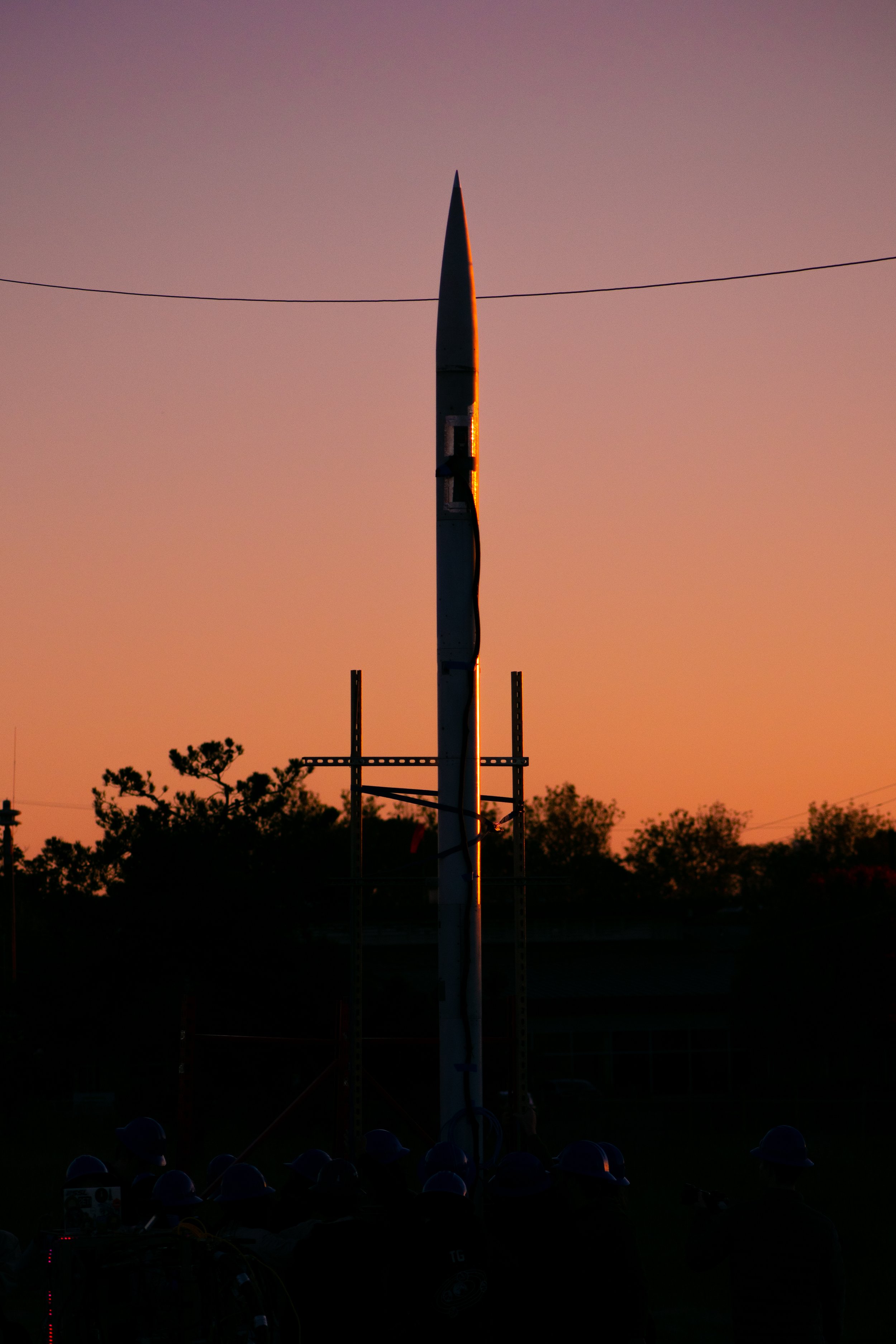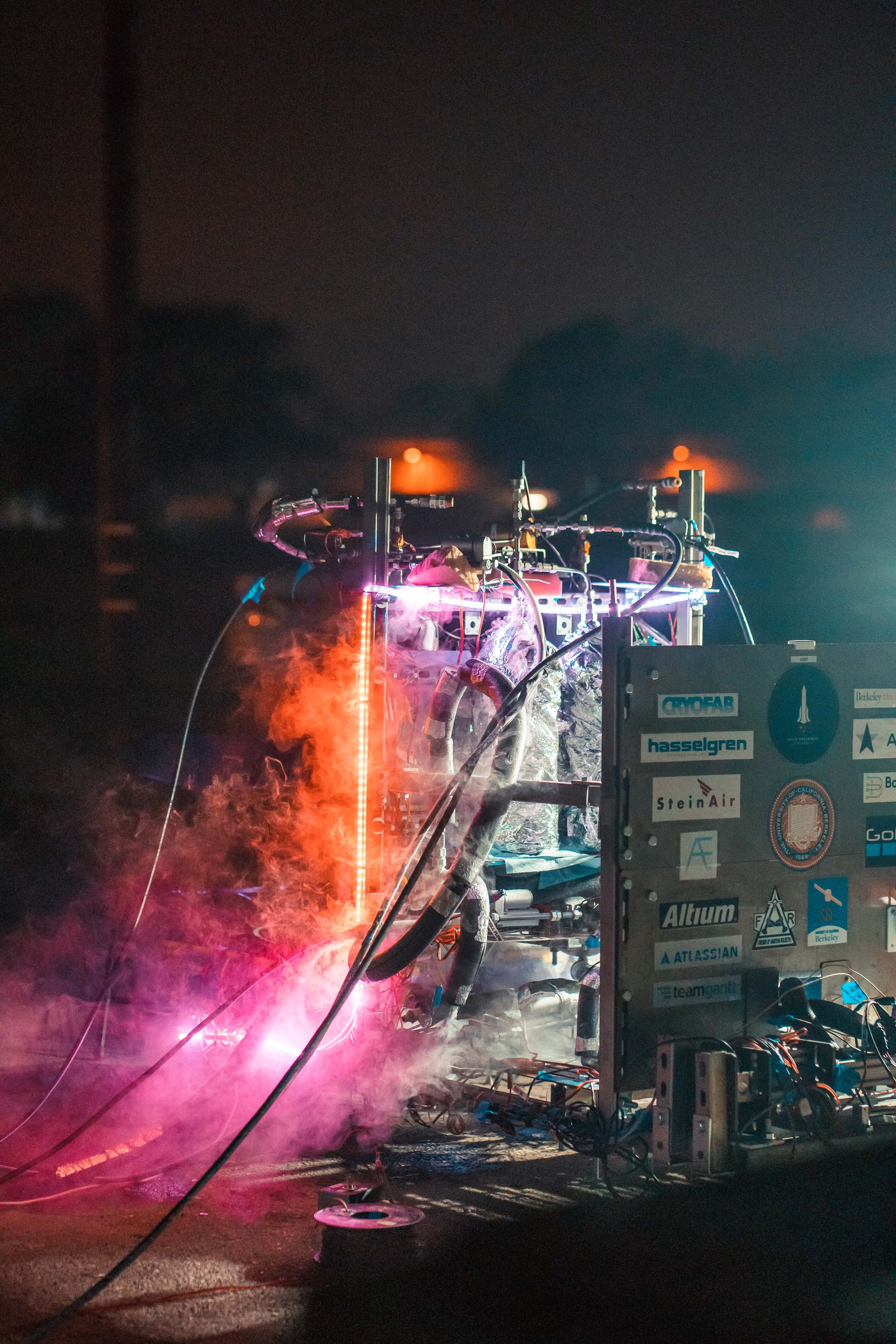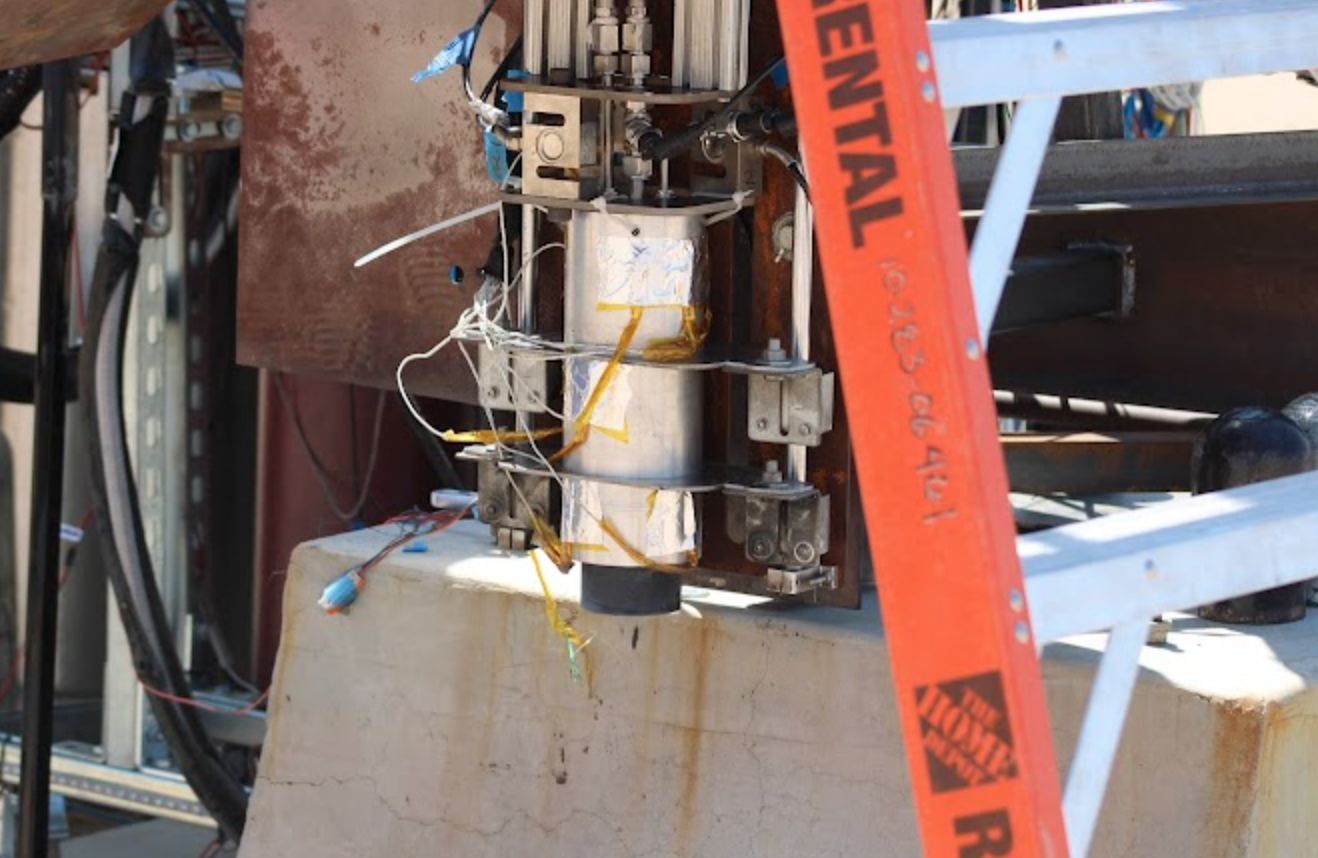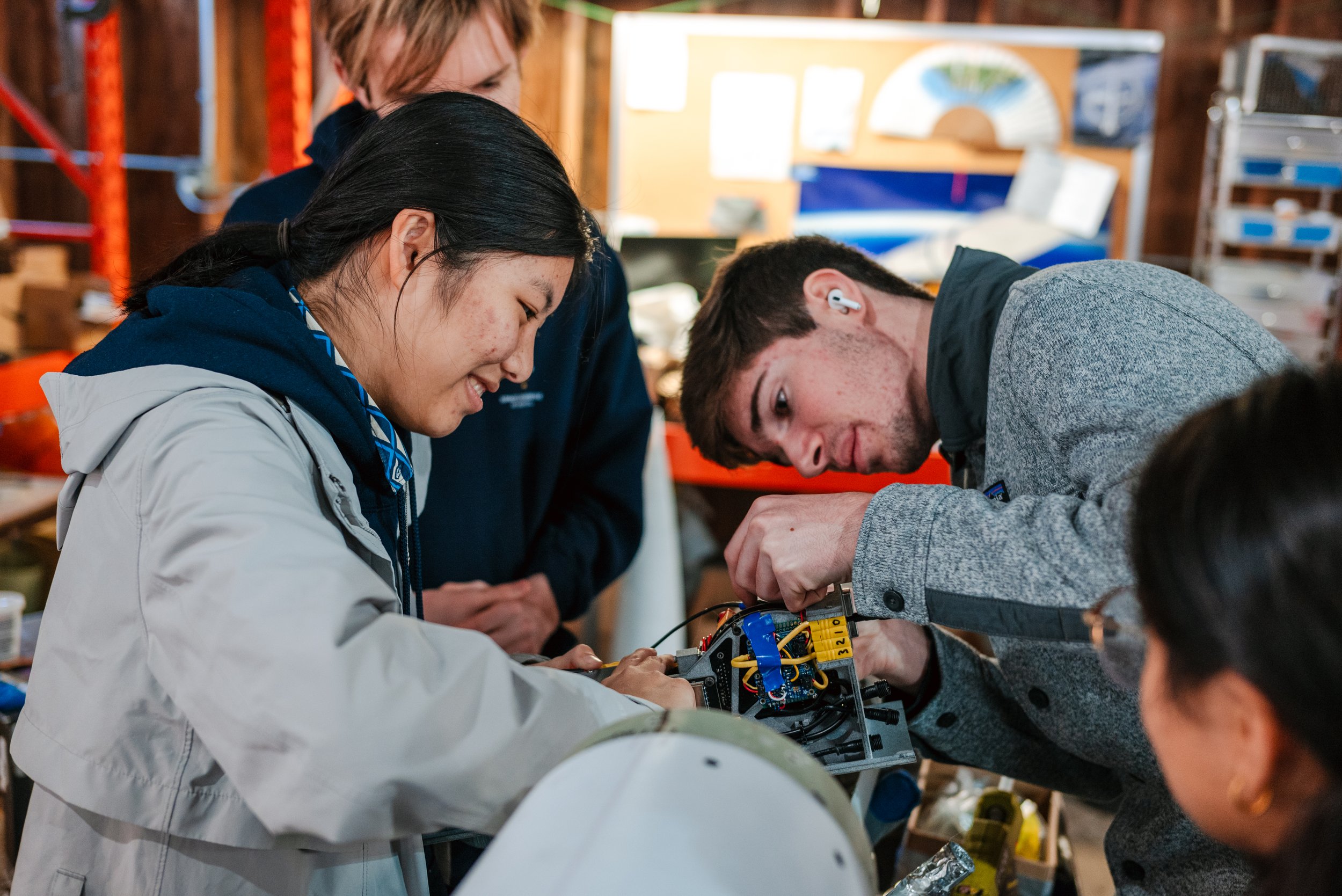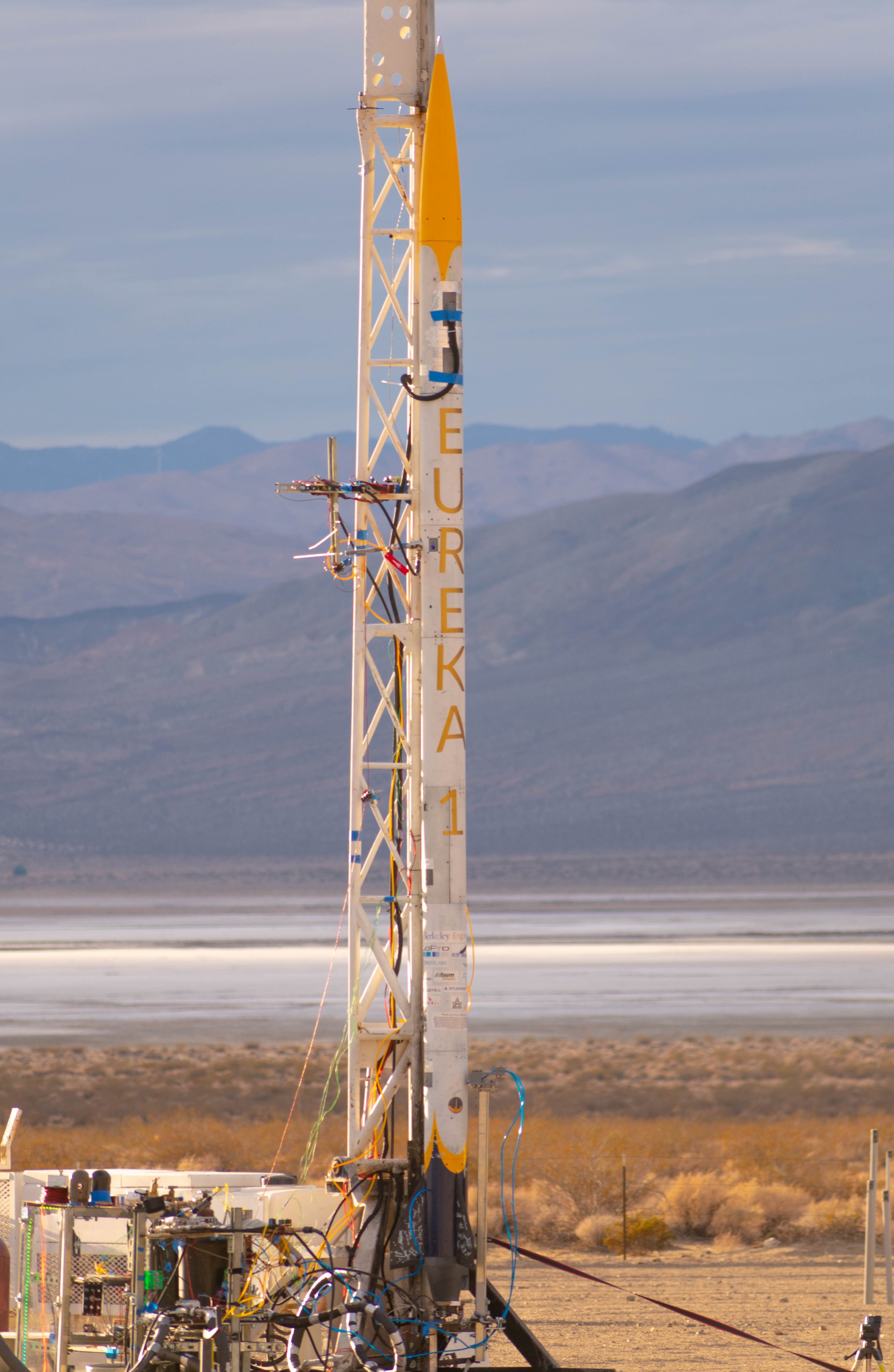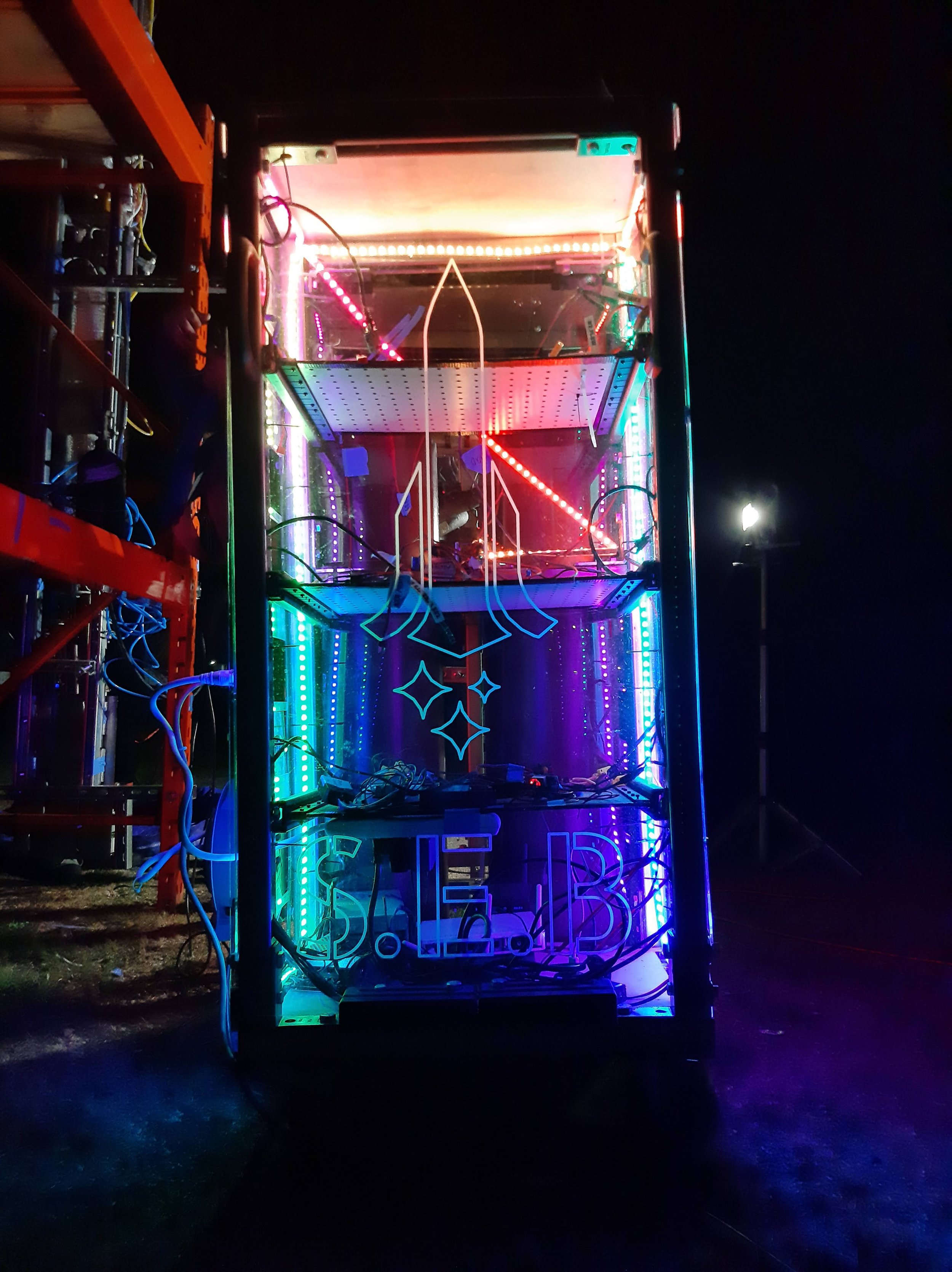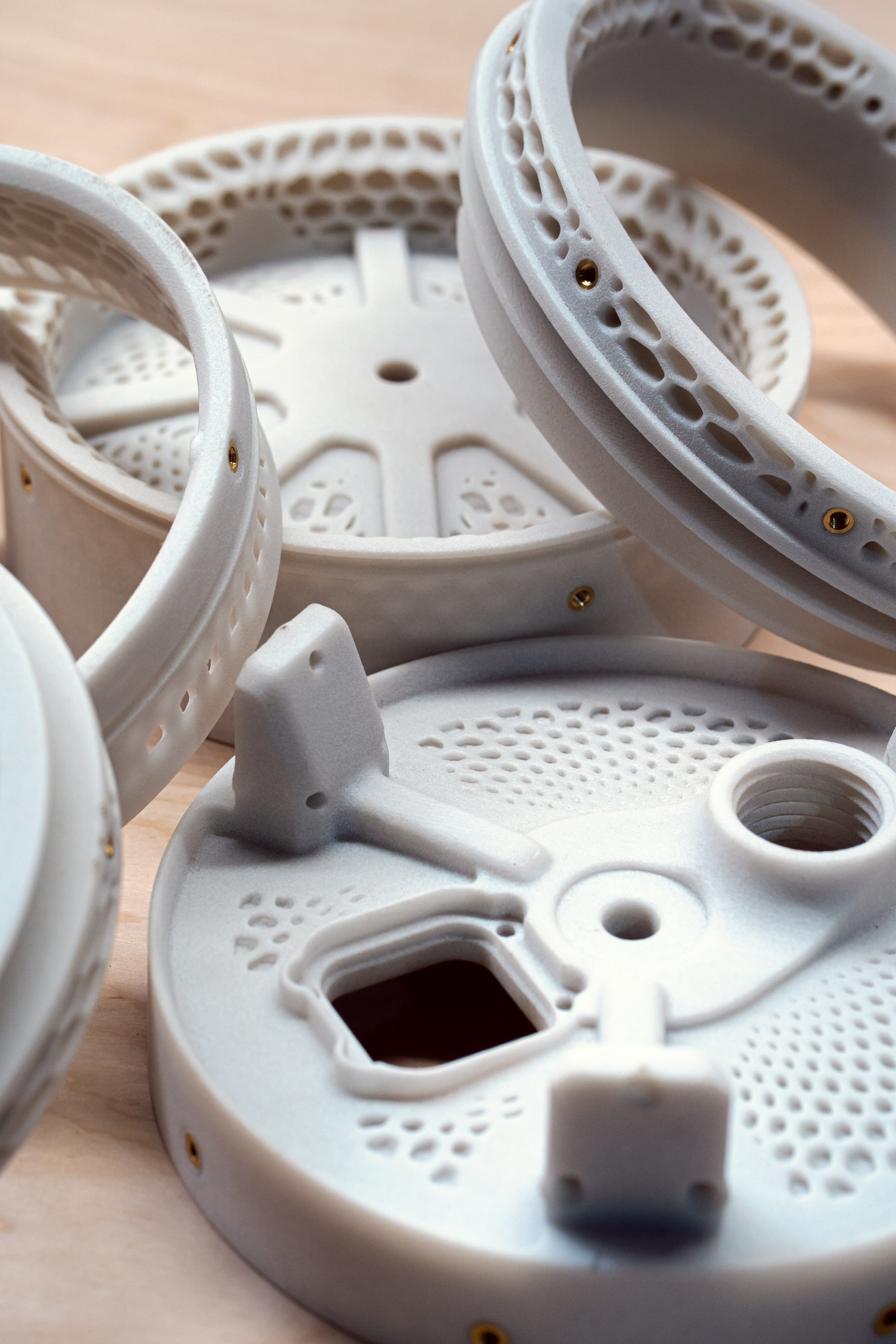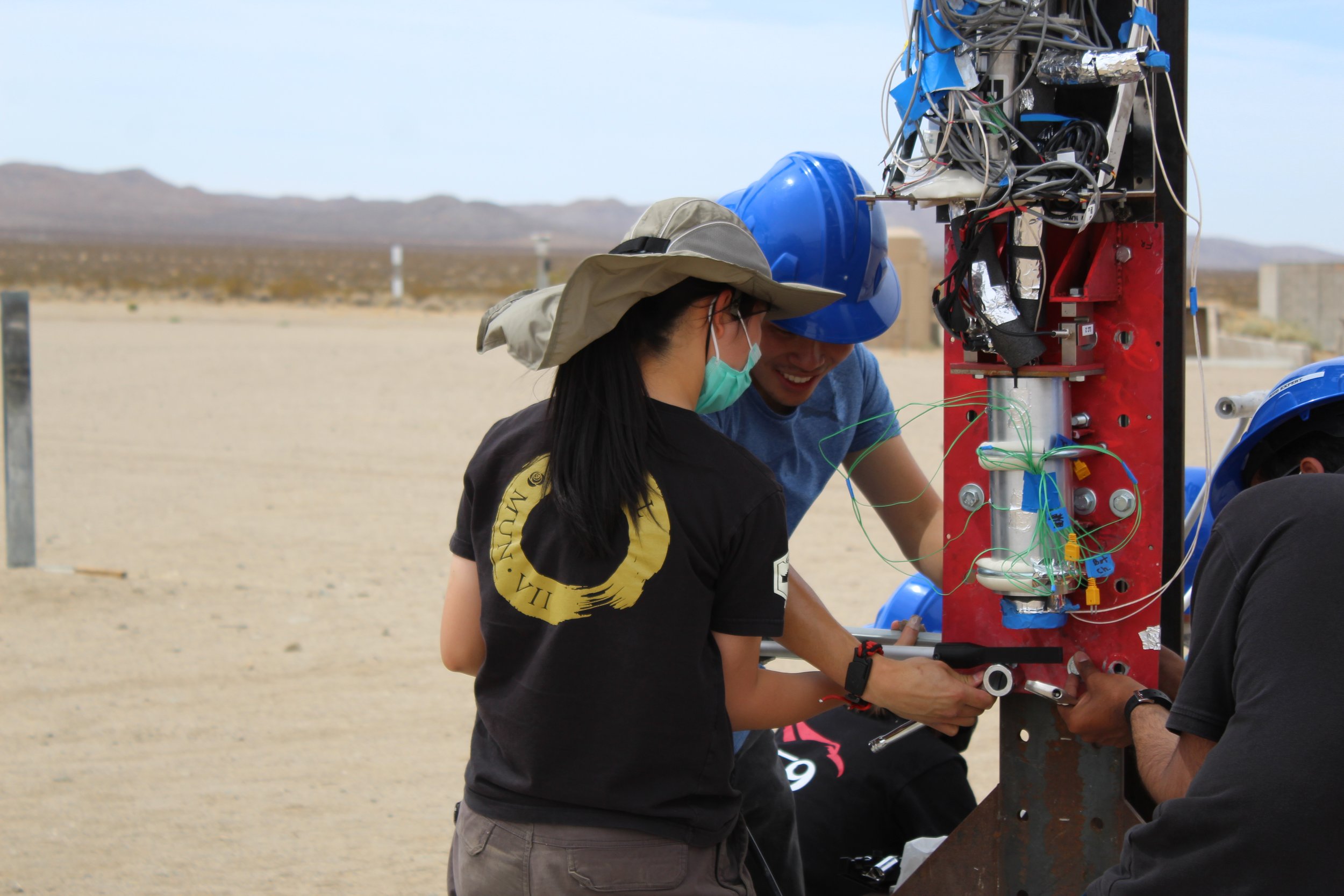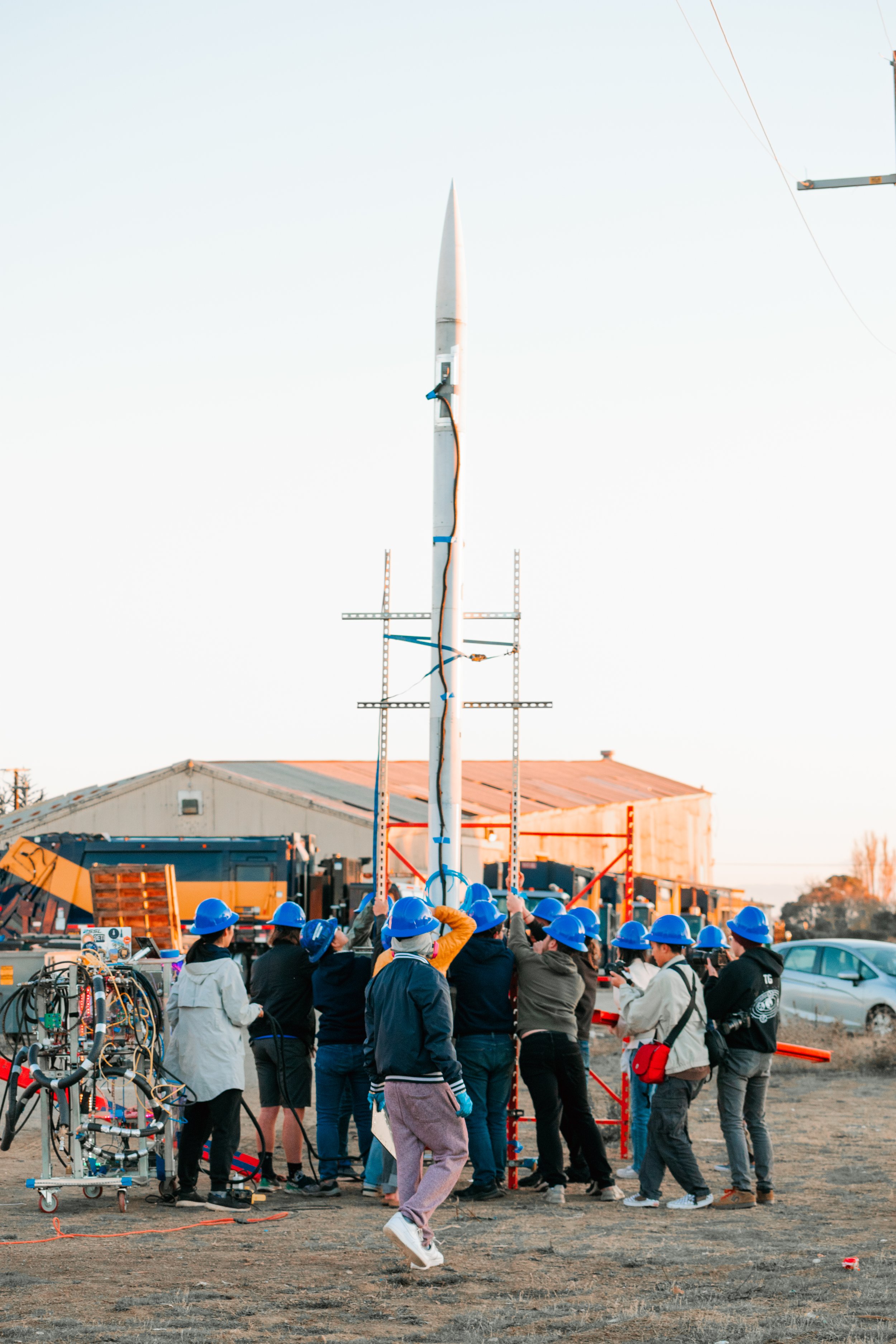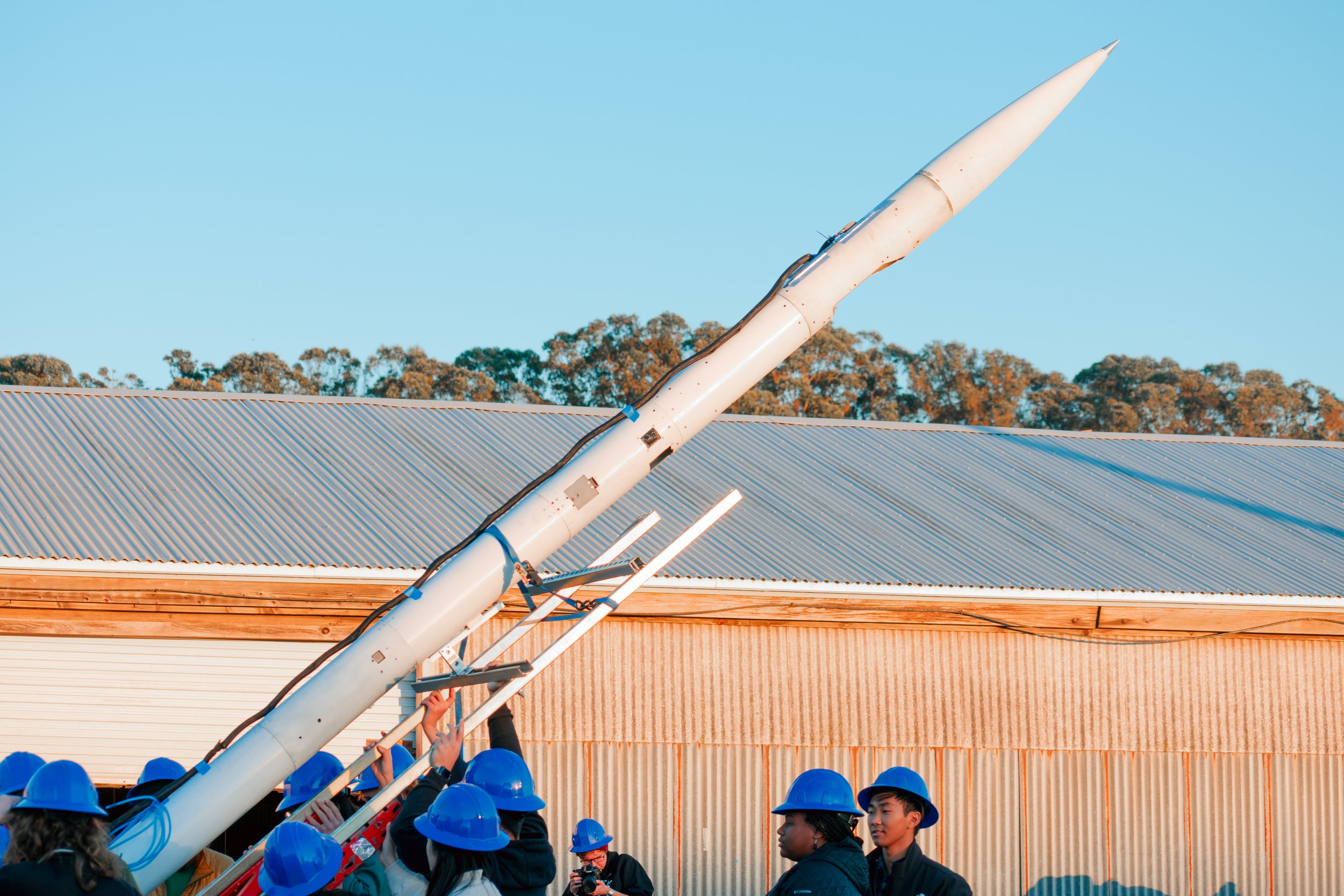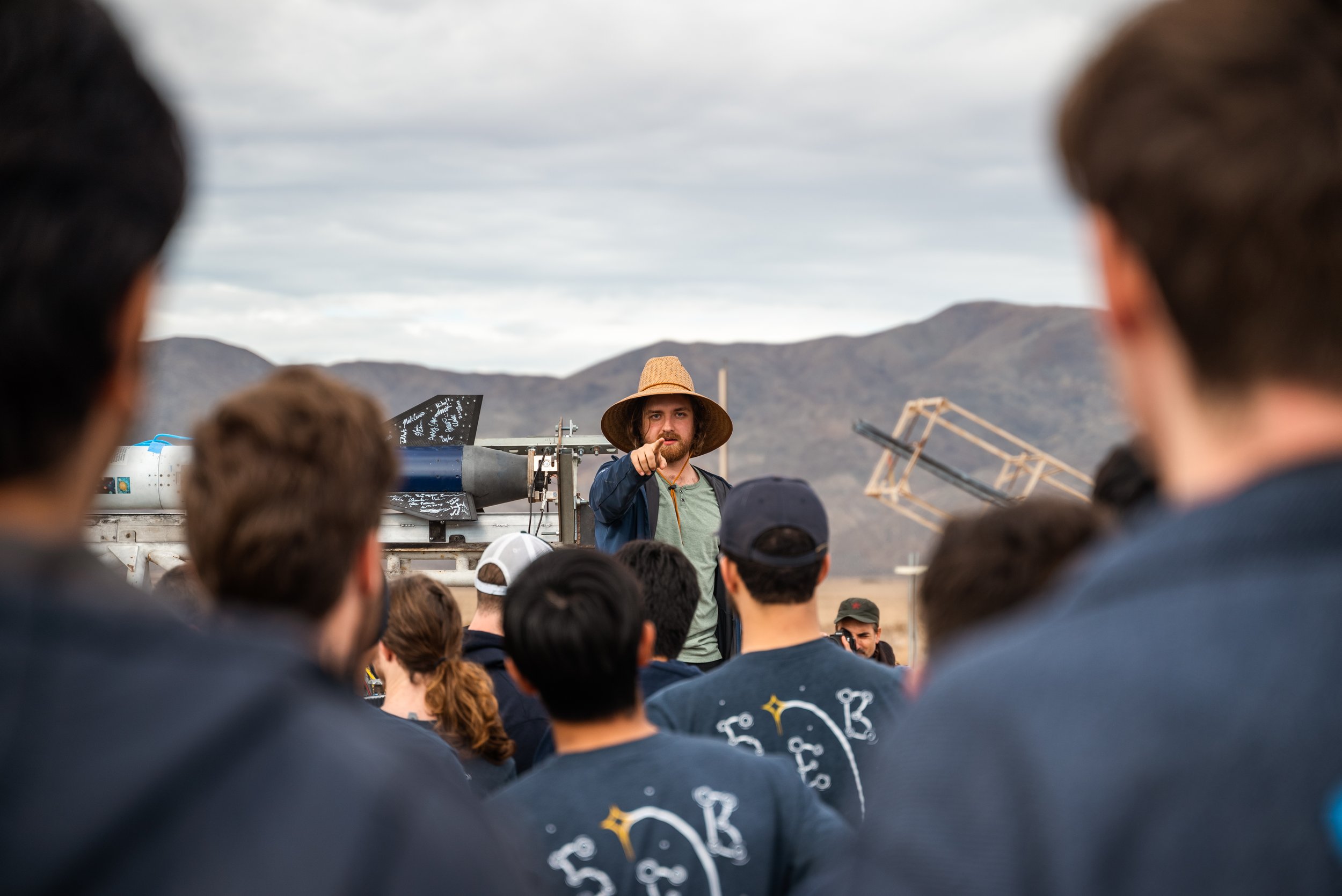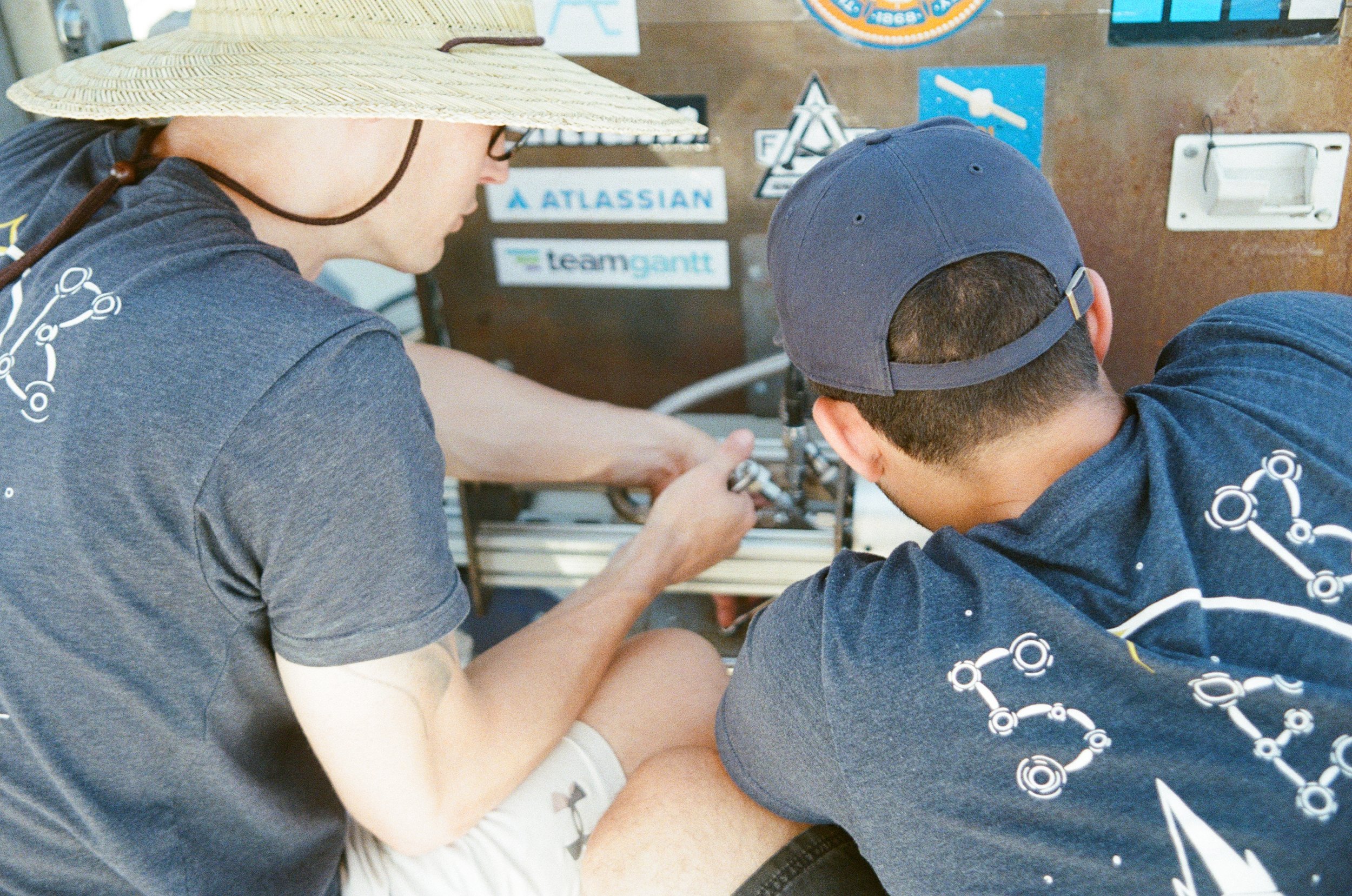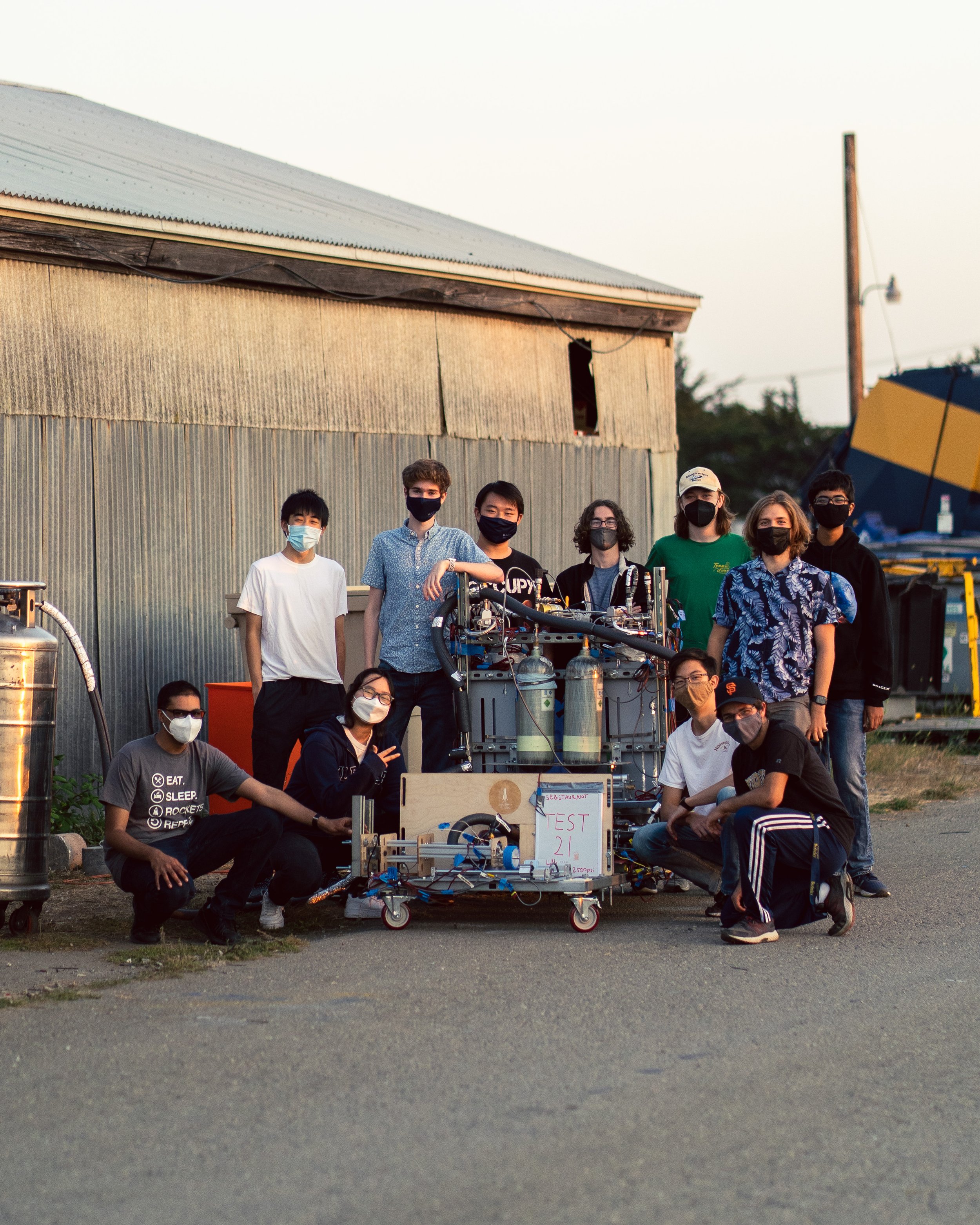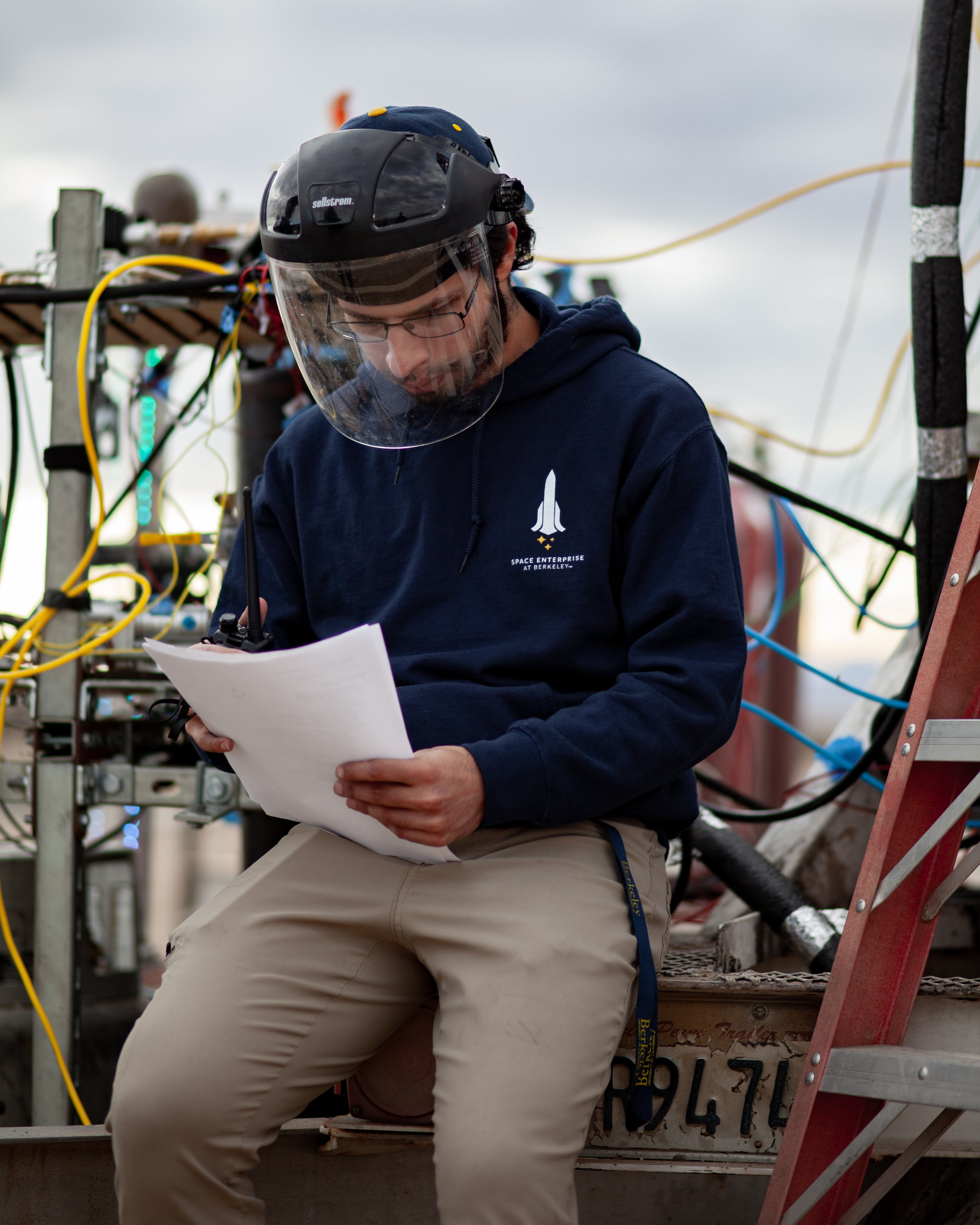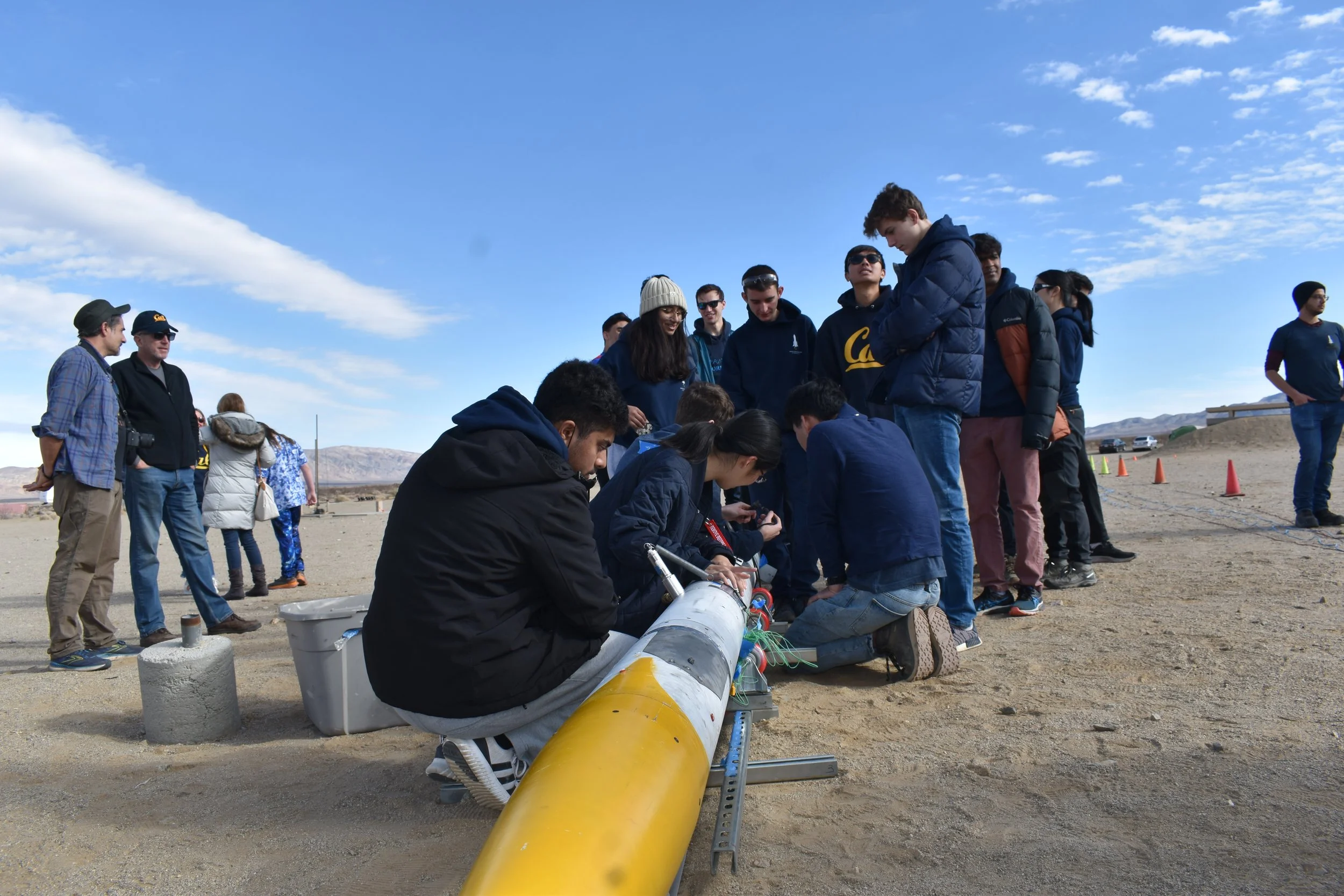EUREKA-1
“TO GO WHERE NONE HAVE GONE BEFORE”
The first liquid bipropellant rocket designed and built by Space Enterprise at Berkeley, Eureka-1 served as a stepping stone towards a space-shot flight. The development of Eureka-1 started in late 2019 and after 3 years, on December 3 2022, EUREKA-1 soared into the California sky from the Friends of Amateur Rocketry site in the Mojave. Powered by Lightbulb, our 2.7kN liquid bi-propellant engine, Eureka-1 reached an apogee of 11,000 feet (3300 meters). Eureka-1 suffered from an error in apogee detection, leading to the loss of the vehicle.
APOGEE
11,024 Feet
Rocket Height
19.3 Feet
TOP Speed
0.95 Mach
Rocket Diameter
7.7 Inch
Average thrust
2.7 kN
Propellants
Liquid Oxygen & Propane
Eureka-1 Highlight
Propulsion
RQD
The Remote Quick Disconnect releases the pressurant fill line from the system prior to launch. For safety, this line is removed by an in-house developed remotely actuated mechanism rather than manually disconnected.
Pressure-Fed Feed System
A composite pressurant tank supplies high pressure nitrogen gas to two propellant tanks, filled with liquid oxygen and liquid propane. Two mechanical dome-loaded pressure regulators control the flow of the gas into each tank. The liquid propellants are forced out the bottom of each propellant tank at controlled rates as the pressurant gas takes their place. From there, the propellants feed into the engine, Lightbulb, at the desired ratio.
Lightbulb Engine
The engine is where liquid oxygen and liquid propane combust to form hot exhaust gases, which exit the nozzle at high speeds to produce thrust. It is cooled via an ablative phenolic liner which protects the aluminum casing from the extreme heat of combustion. Fuel and oxidizer are injected through a pintle injector, which serves to atomize (or mist) the propellants and thoroughly mix them, increasing combustion efficiency.
Eureka-1 highlight
Avionics
AvBay + Telemetry
The goal of the avionics system on Eureka-1 was to collect as much data about the system as possible while it was flying. It also had the responsibility of deploying the drogue and main parachutes to facilitate the recovery of the vehicle. To achieve the first goal, we built a custom flight computer PCB which was capable of reading pressure transducers, thermocouples, and capacitive fill sensors. It also had an on-board IMU, GPS, and barometric pressure sensor for gathering crucial flight data. All of this data, once collected, was forwarded to a custom radio PCB, which also included a "black box" flash chip.
After extensive range testing, Eureka-1's telemetry worked exactly as intended on launch day. Ground station receivers were able to see a video feed coming live from the rocket (right) from when it left the launch rail, to apogee and engine cutoff. Not only that, data from the flight computer's sensors was received over radio over the entirety of Eureka-1's flight, including GPS coordinates of the flight path that allowed the crash site to be located.
Eureka-1 Highlight
Testing Campaign
Waterflows
The first tests with any system substitute water for the actual propellants. These tests verify that the system is functional and safe at high pressures, and that the system performs as expected, given that the difference in properties between water and the actual propellants is accounted for.
Coldflows
After system safety and functionality is demonstrated with water flows, systems are tested with cryogenic liquid nitrogen as an analog for the actual propellants. These tests ensure the system can safely operate at cryogenic temperatures and high pressures, as well as reach target pressures and performance.
Hotfires
After system performance has been optimized sufficiently with cold flows, we transport systems to the FAR site in the Mojave Desert, where we test system performance with engine static fires. During these tests, liquid oxygen and propane are used, and so combustion occurs. The data collected during these hotfires is invaluable, and is analyzed to further refine the system. Eureka-1 performed the following hotfires:
Launch: December 2022
Launched to an apogee of 11,024 ft, with the engine and feed system performing nominally up to engine cutoff. However, apogee detection issues resulted in failed recovery.


